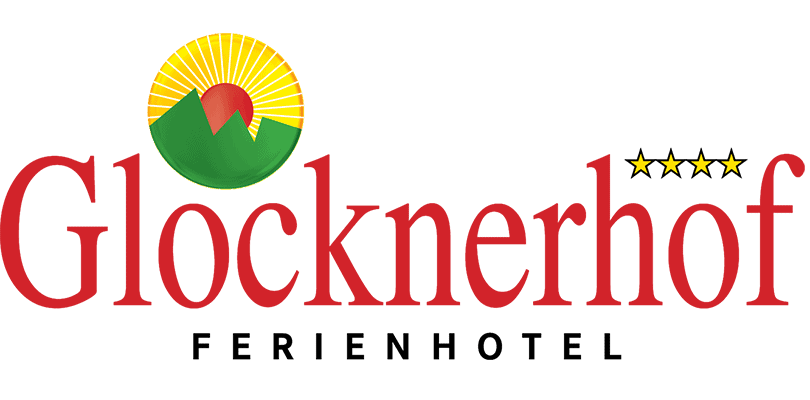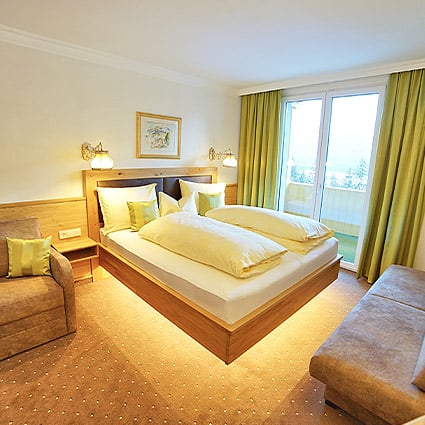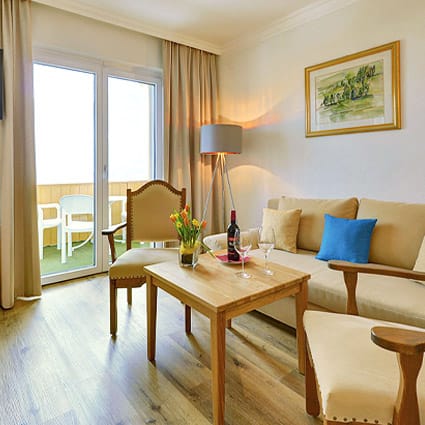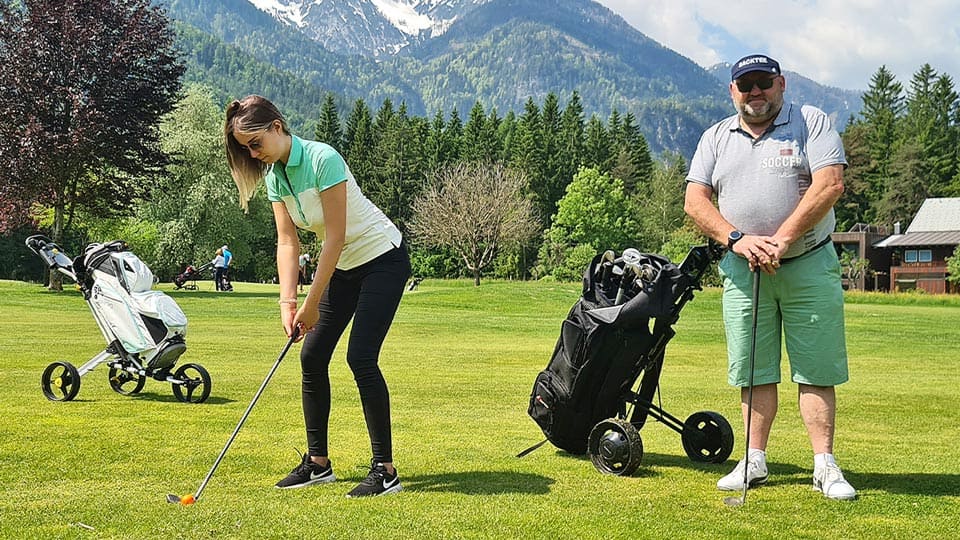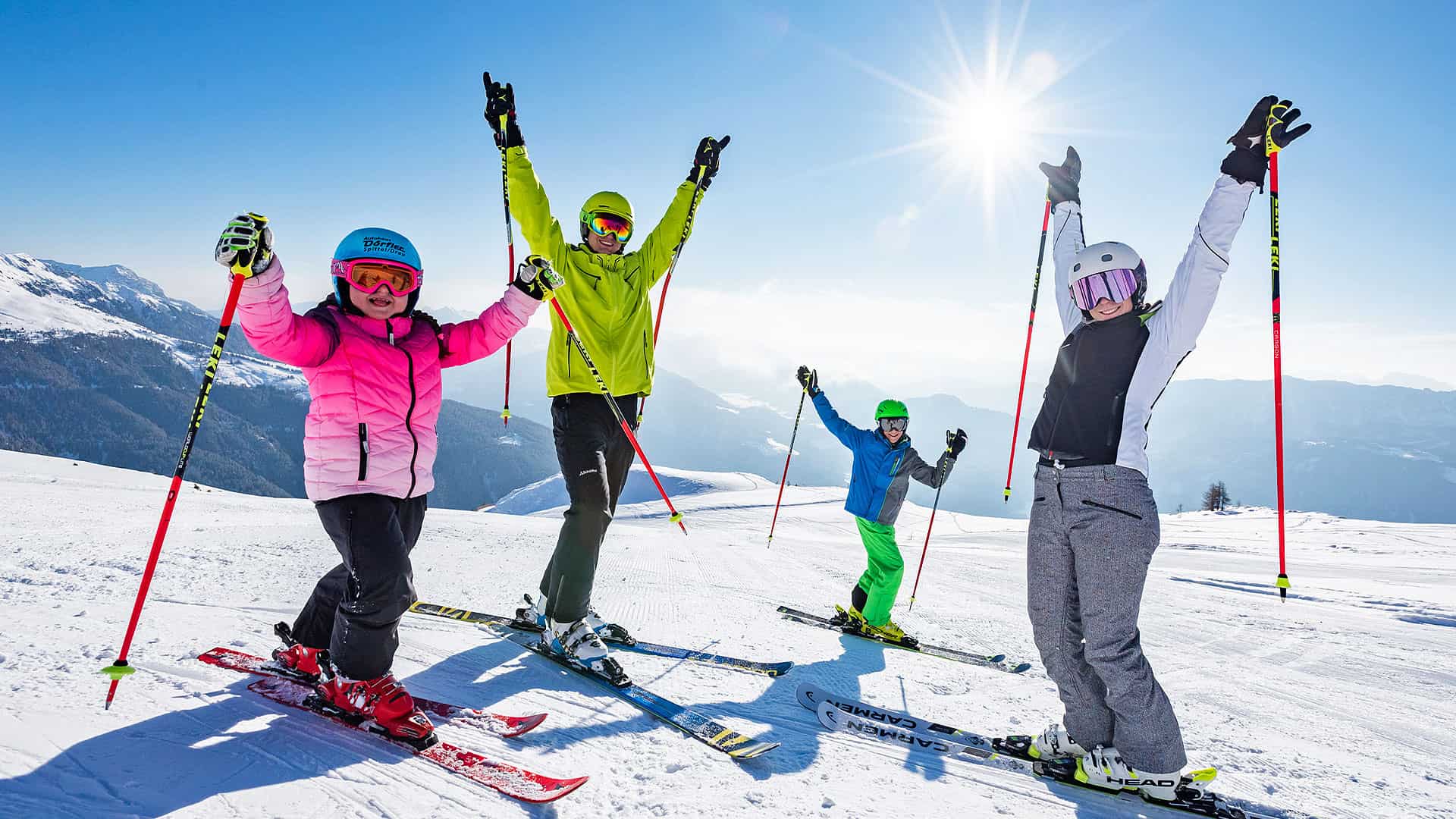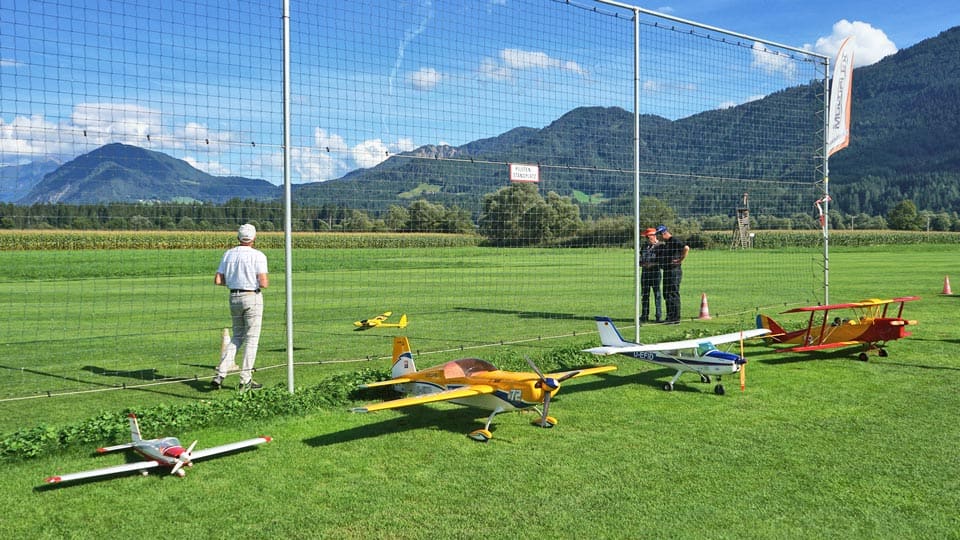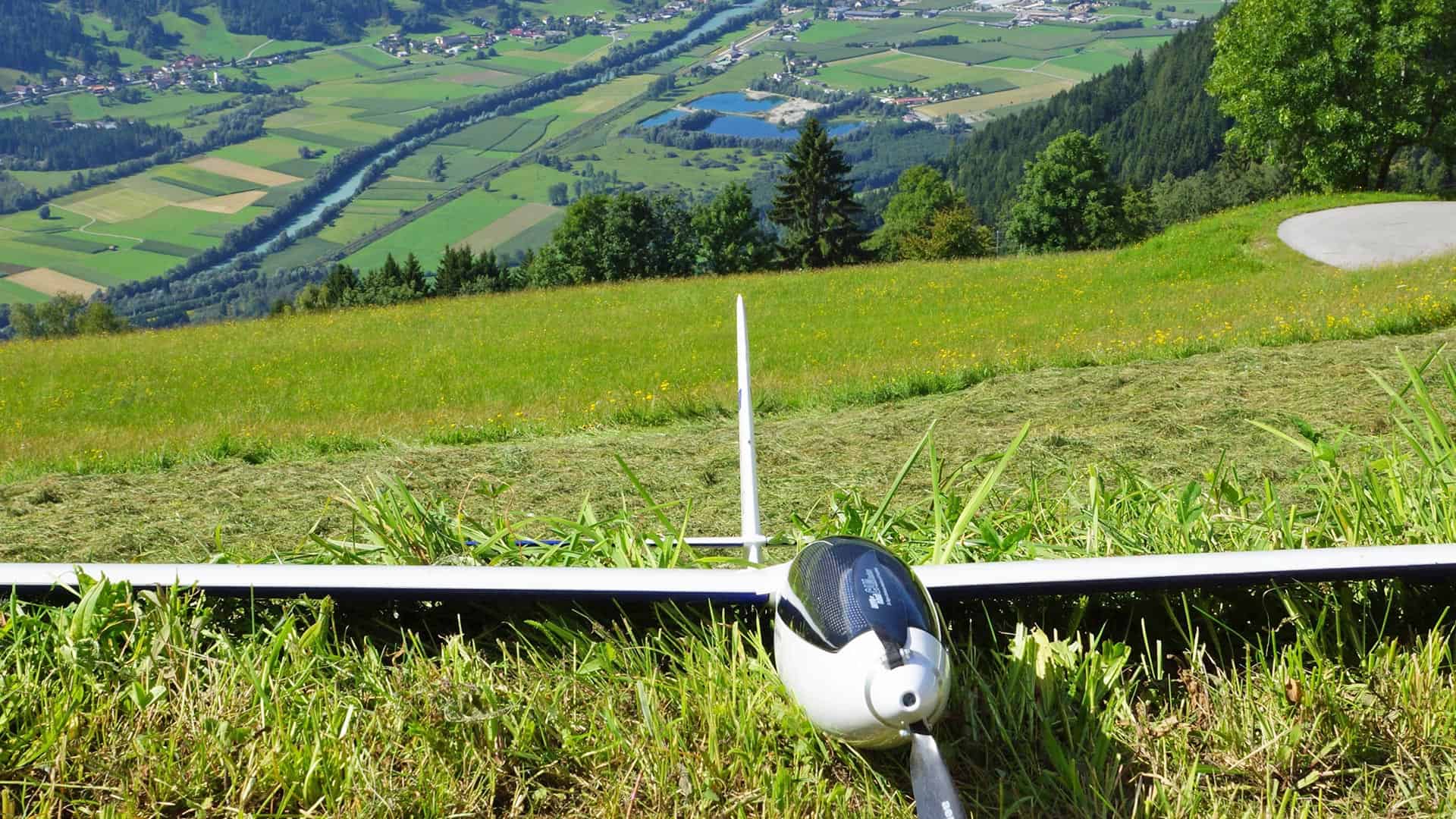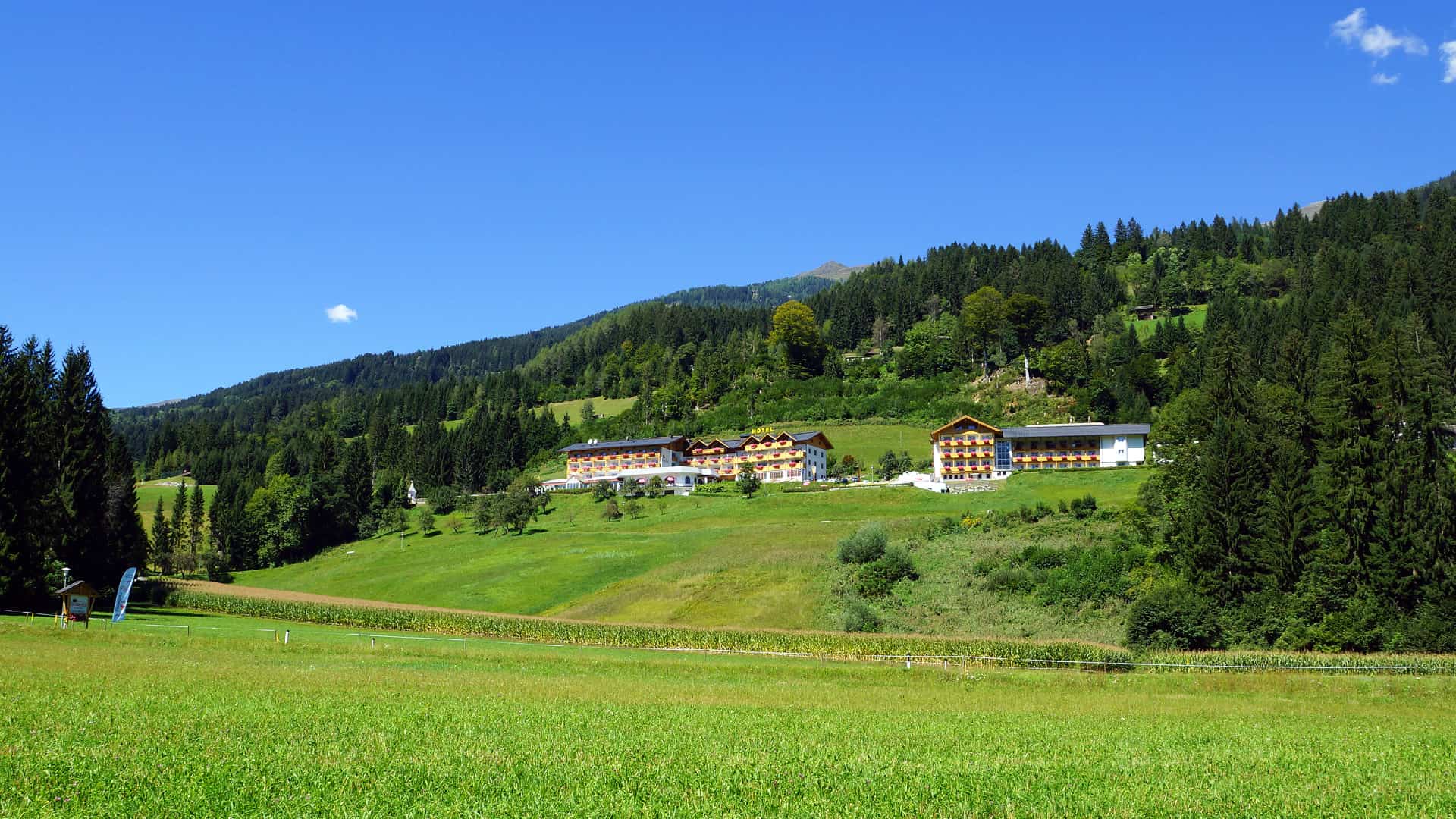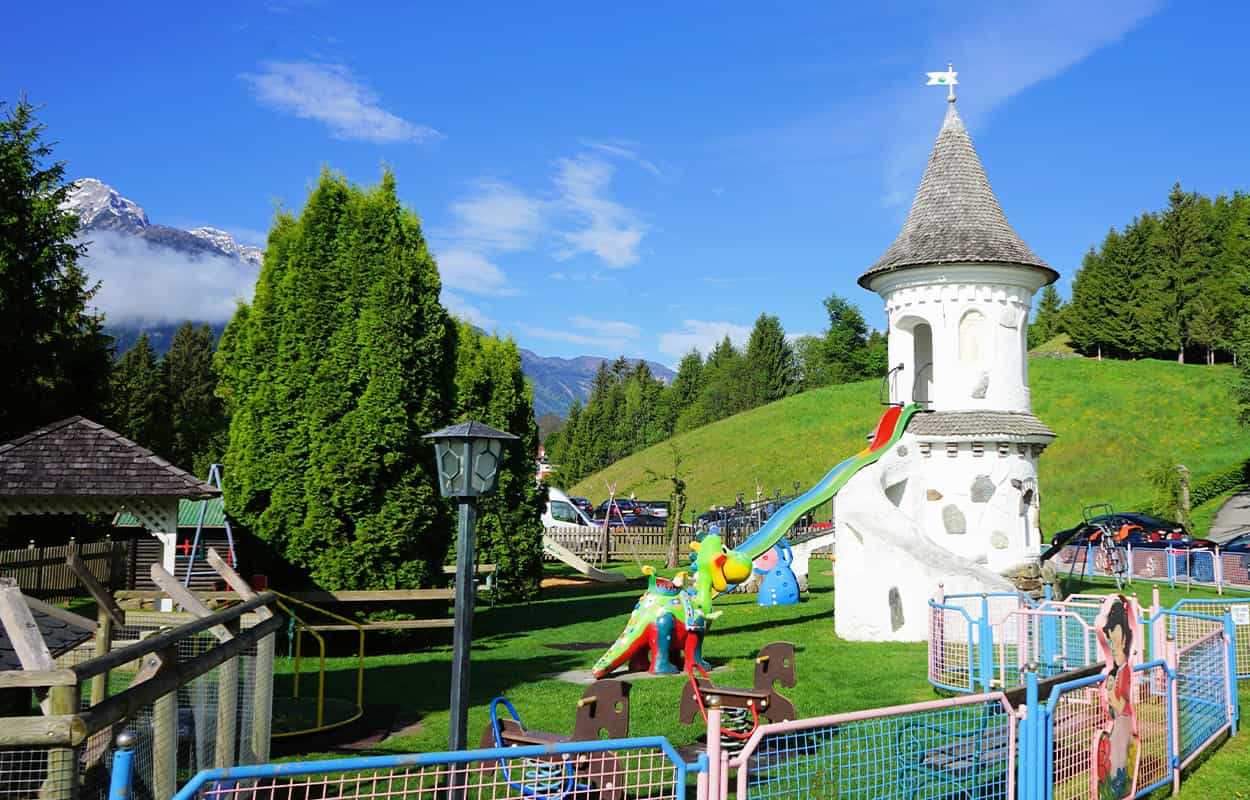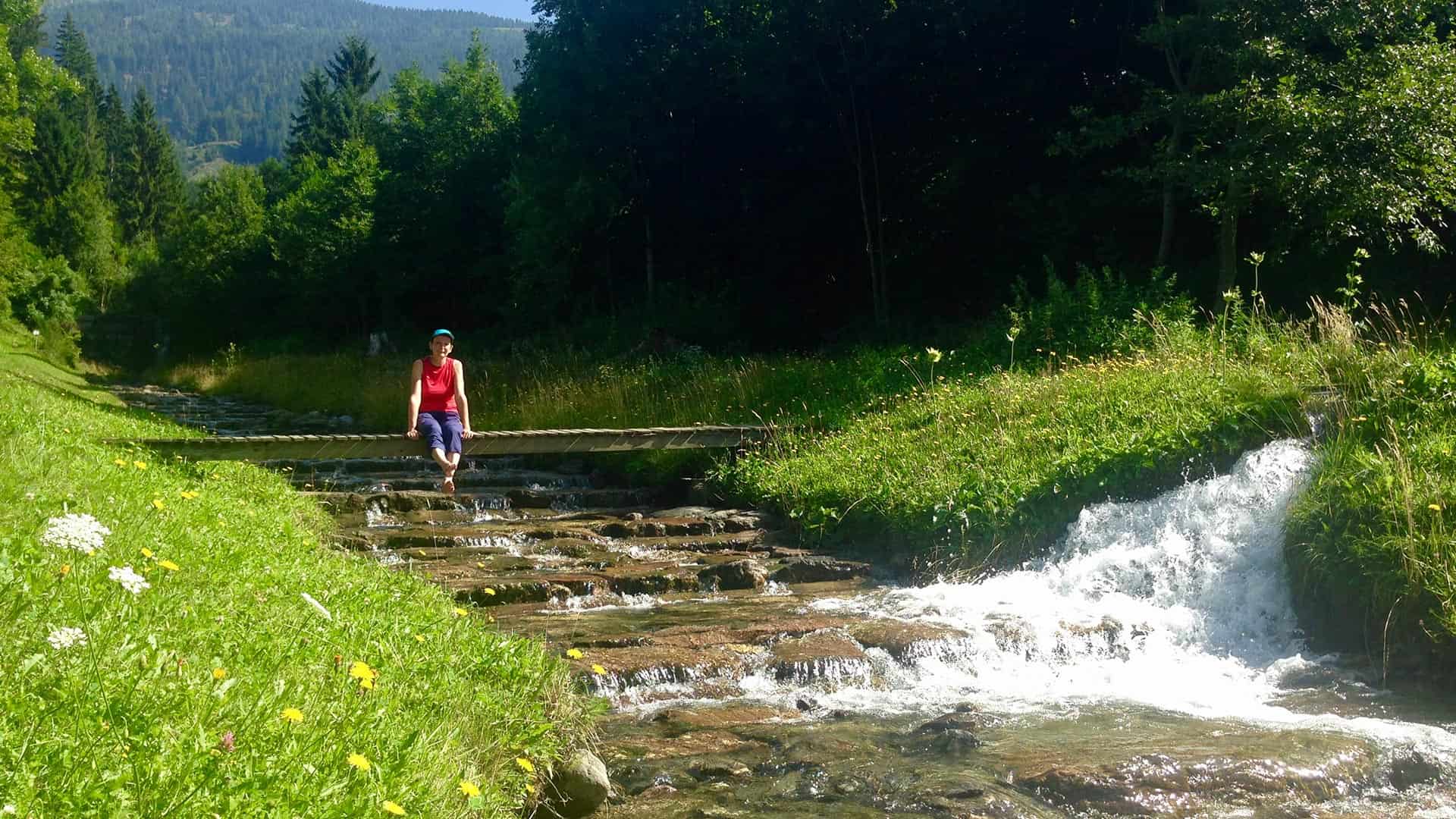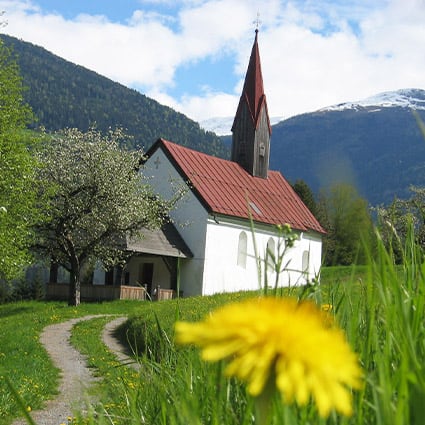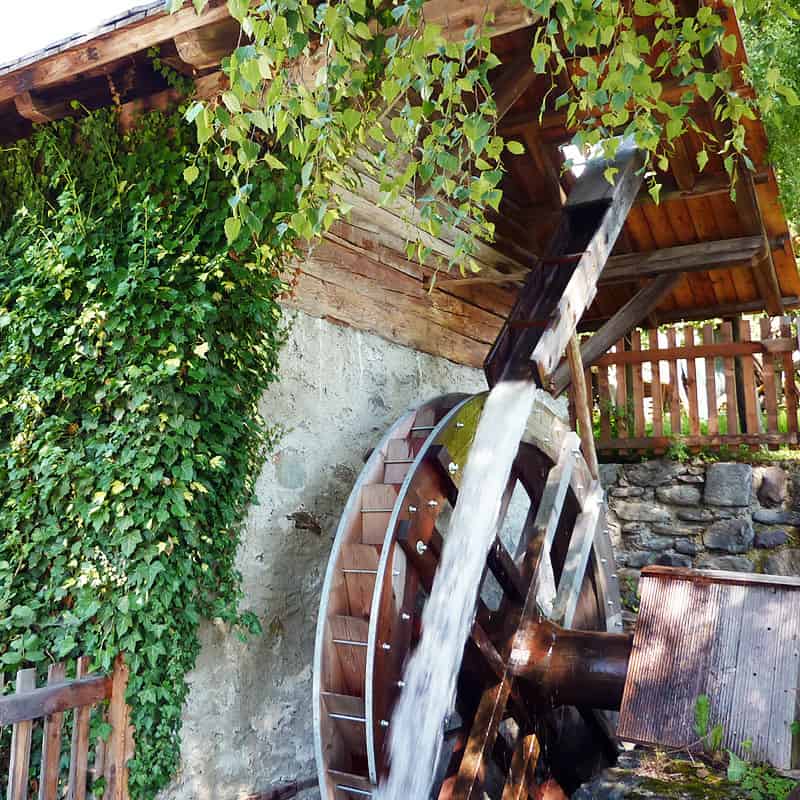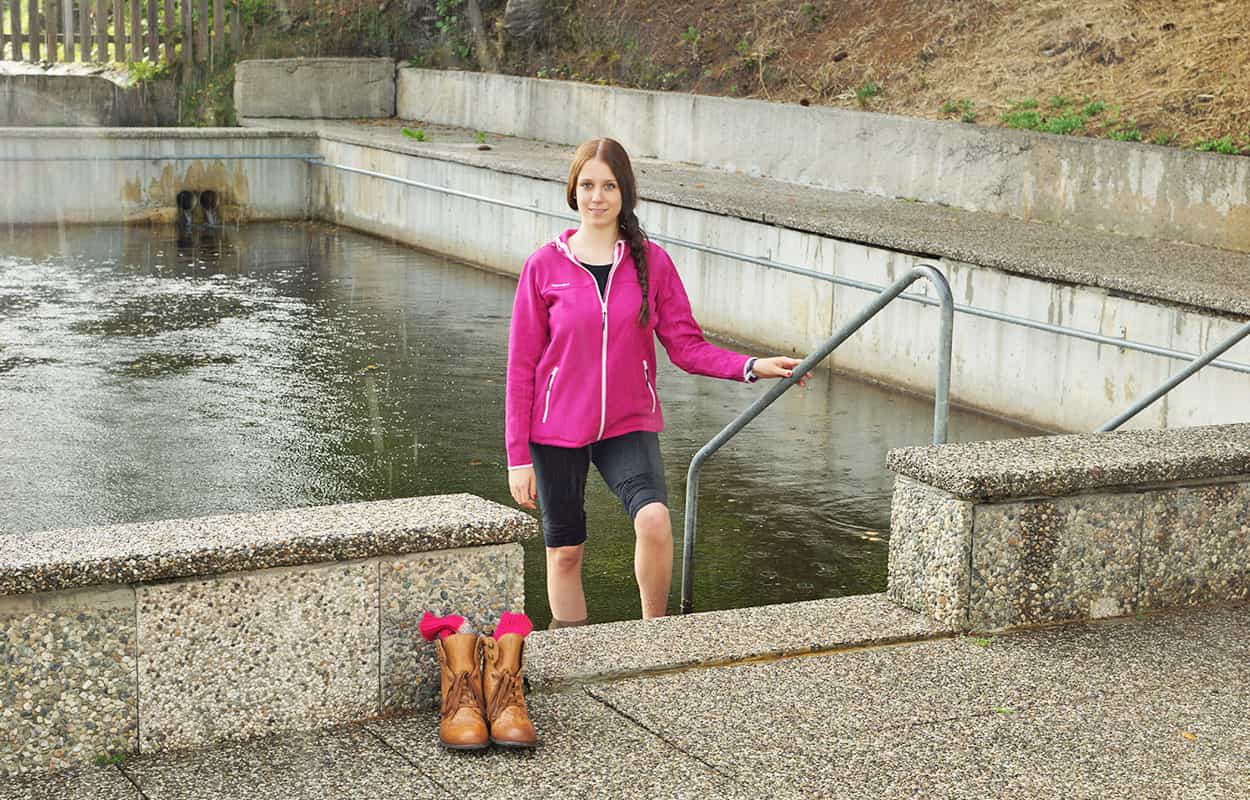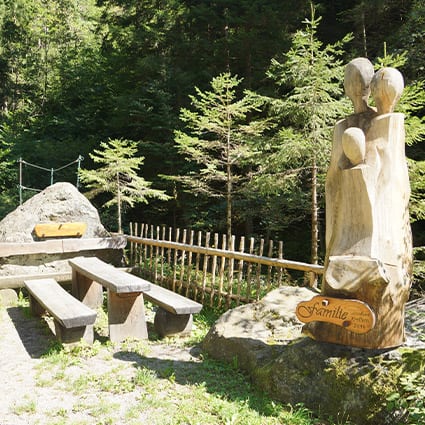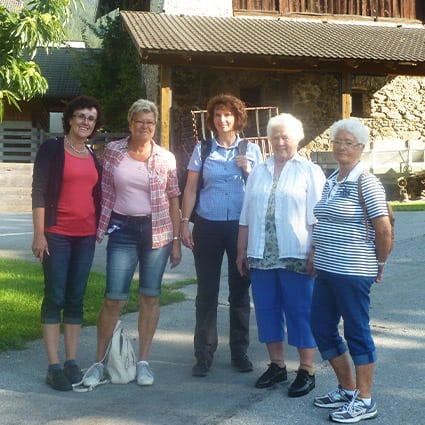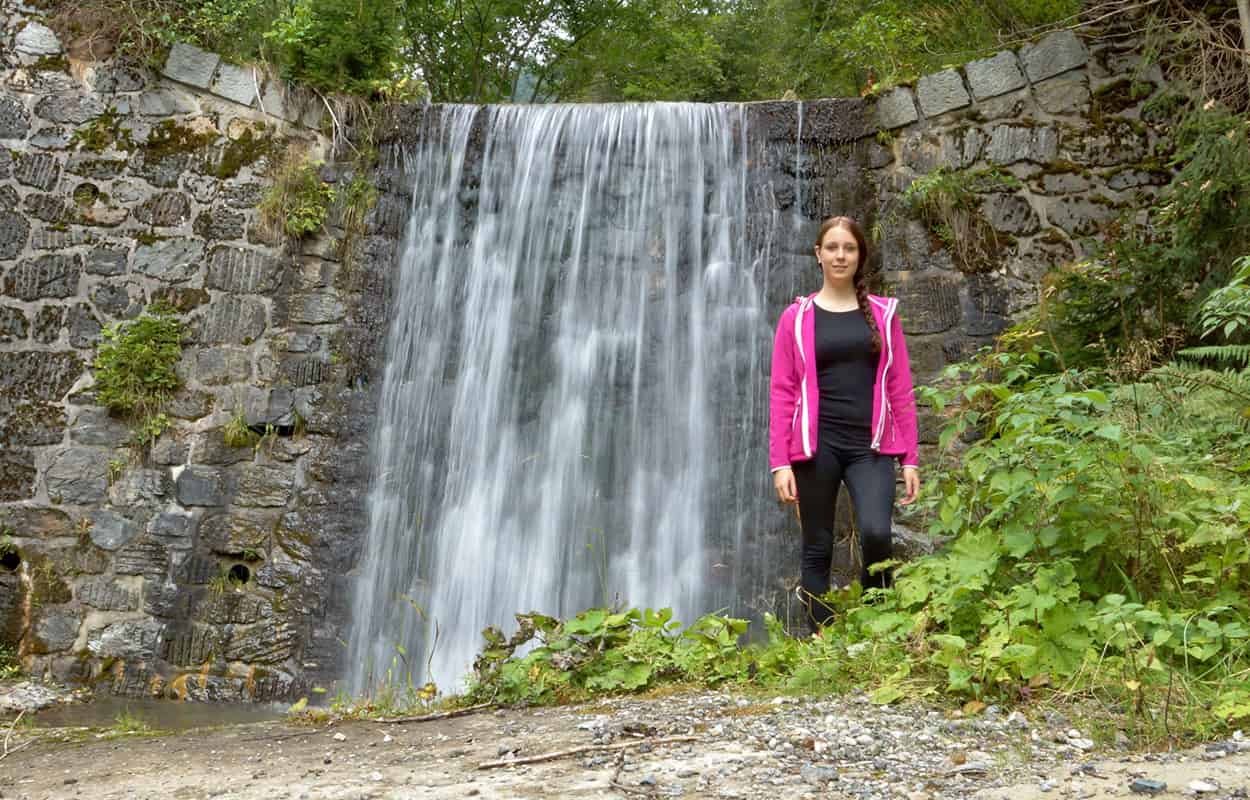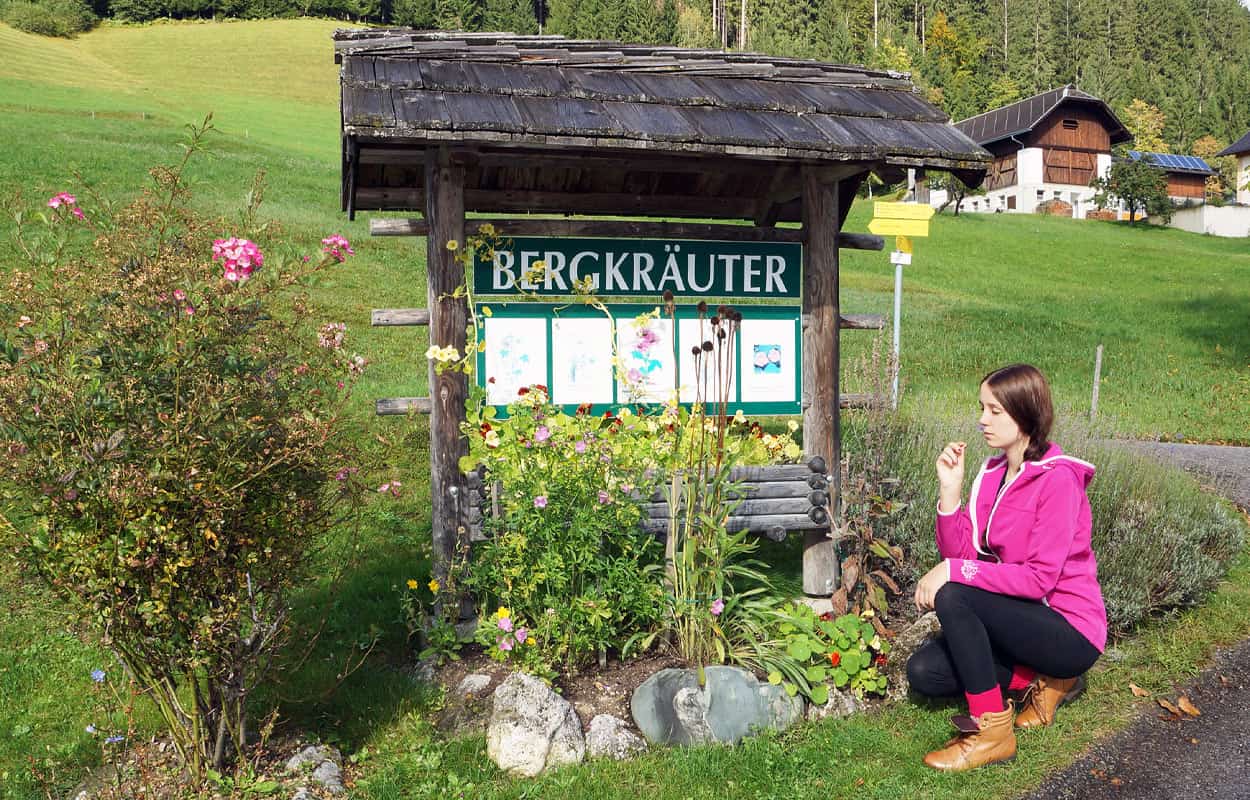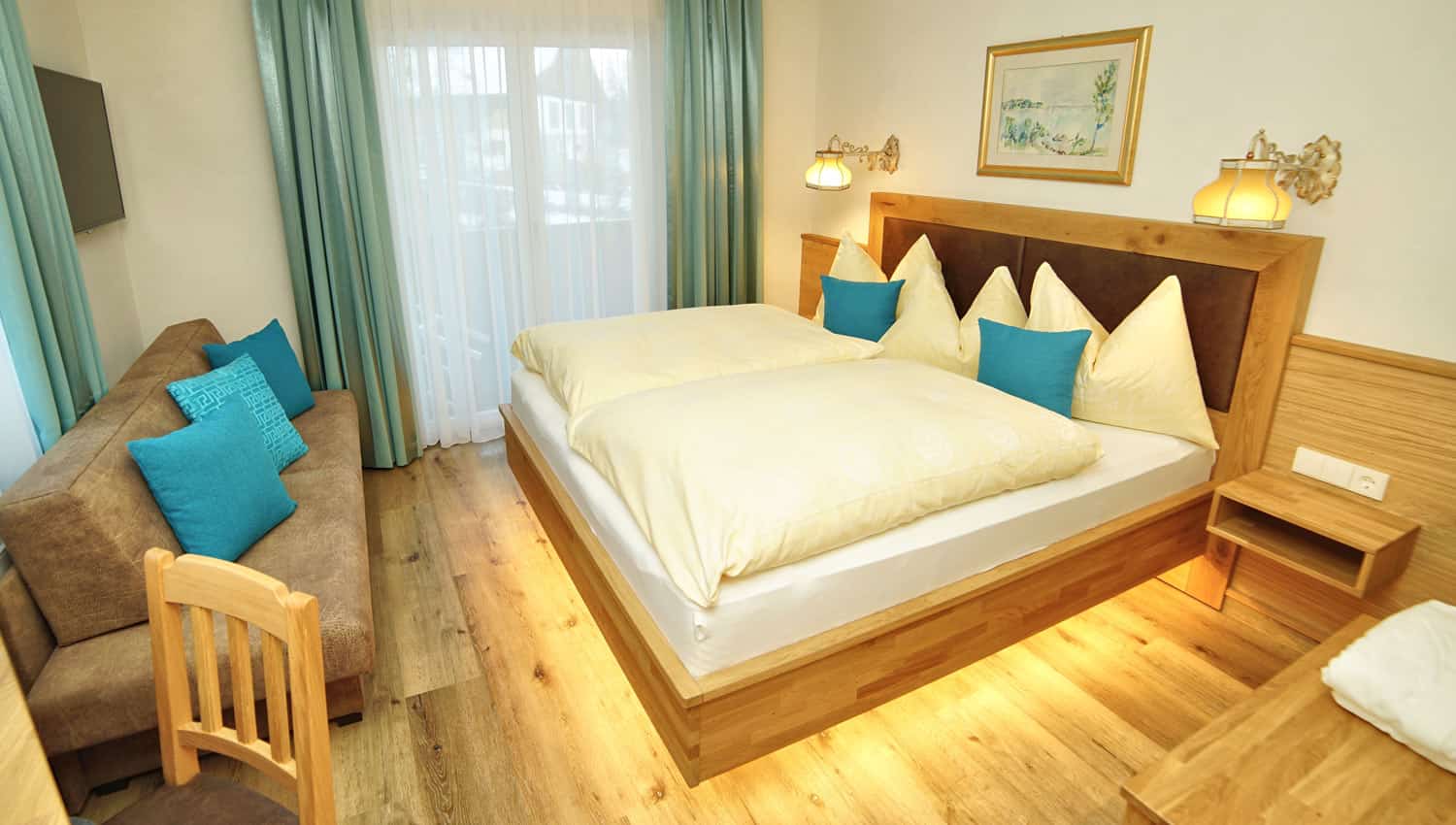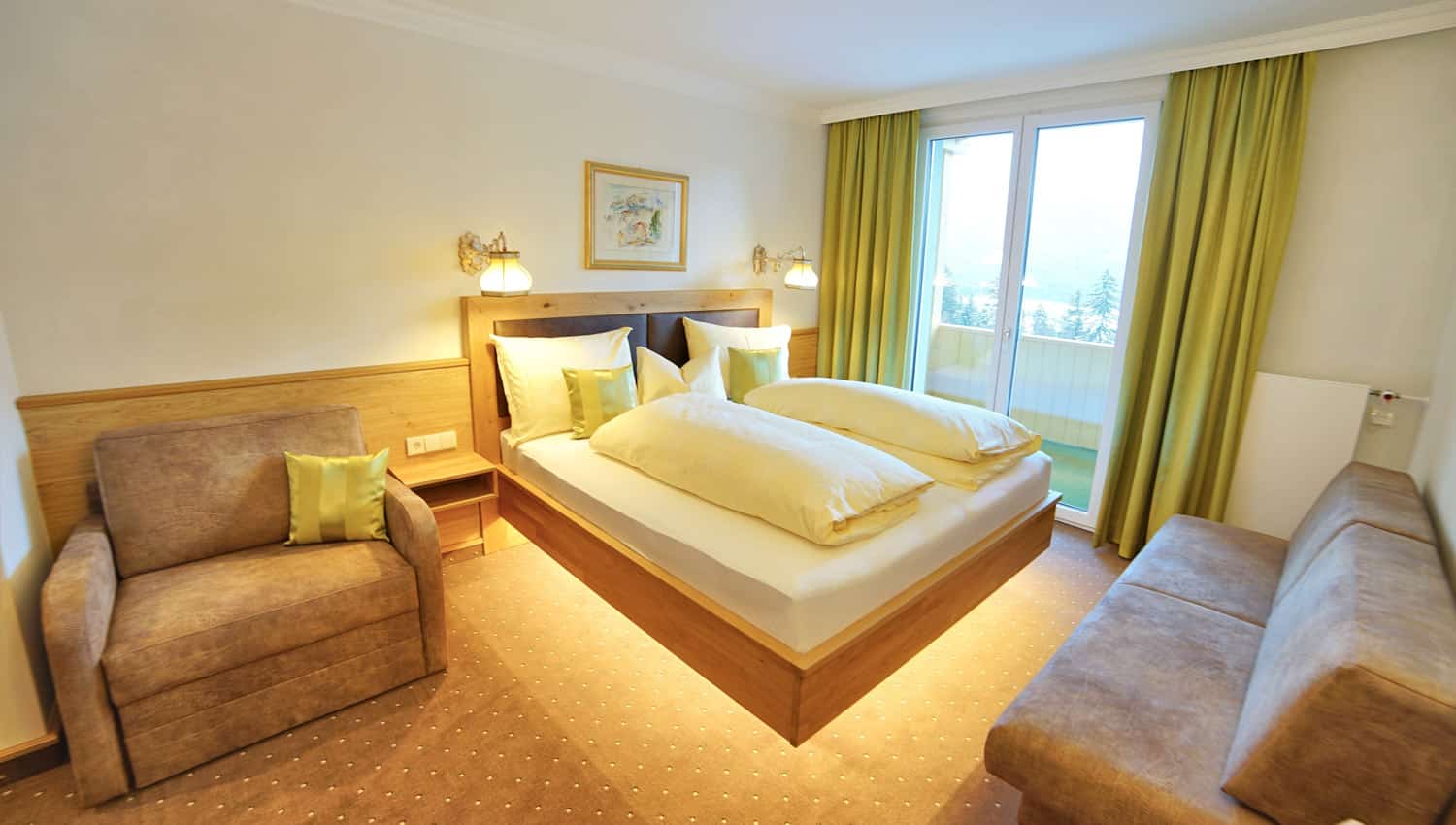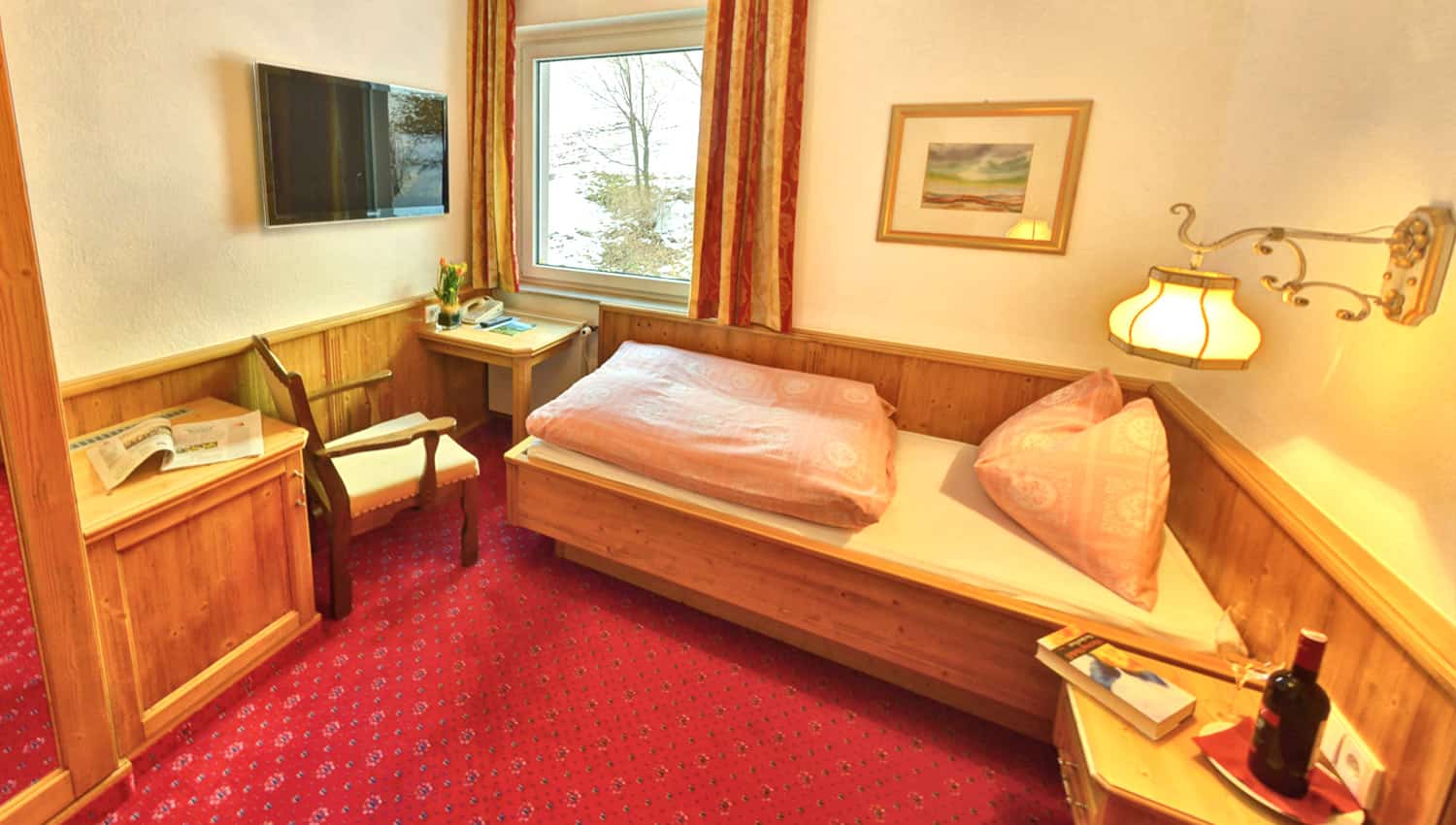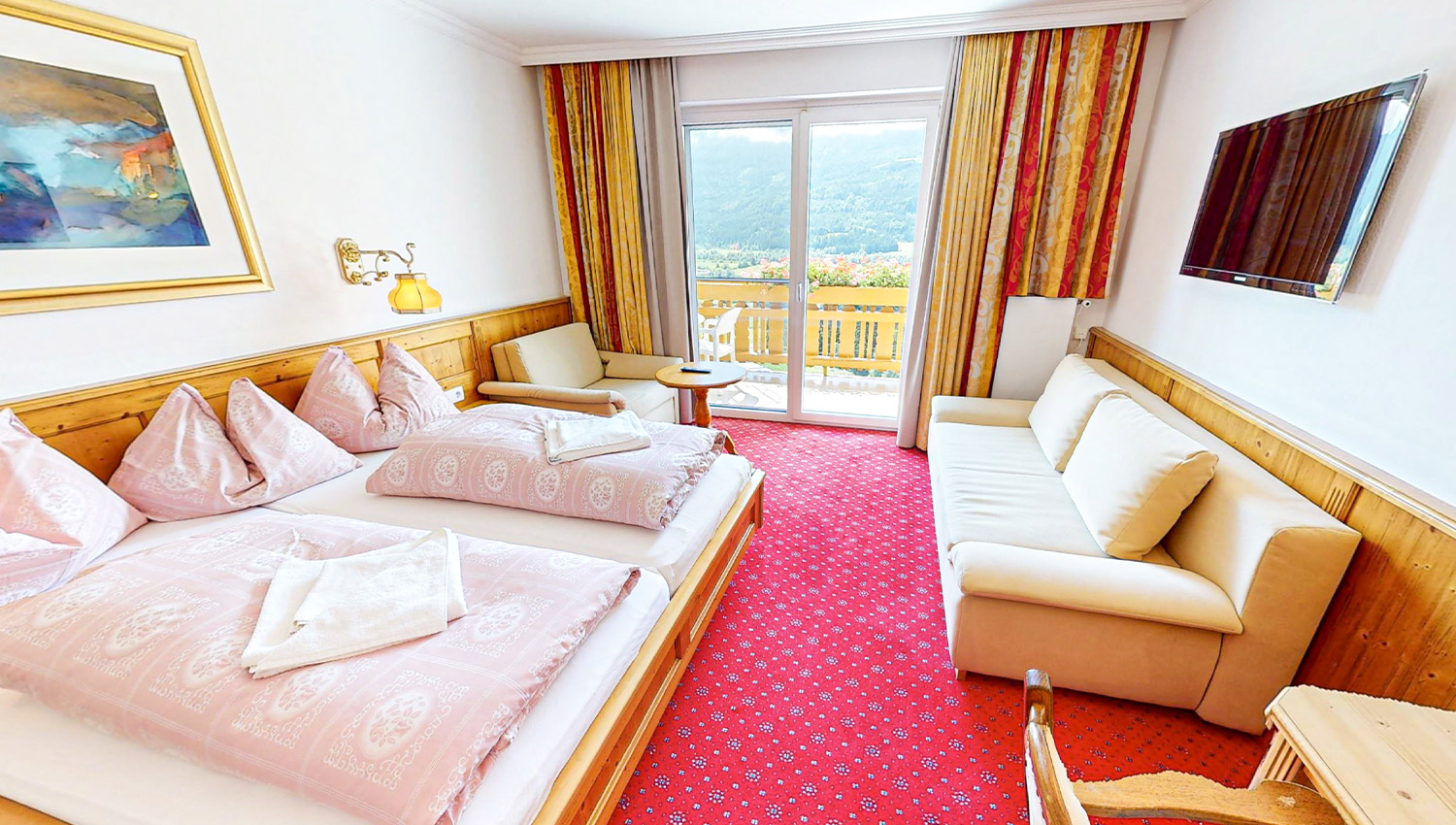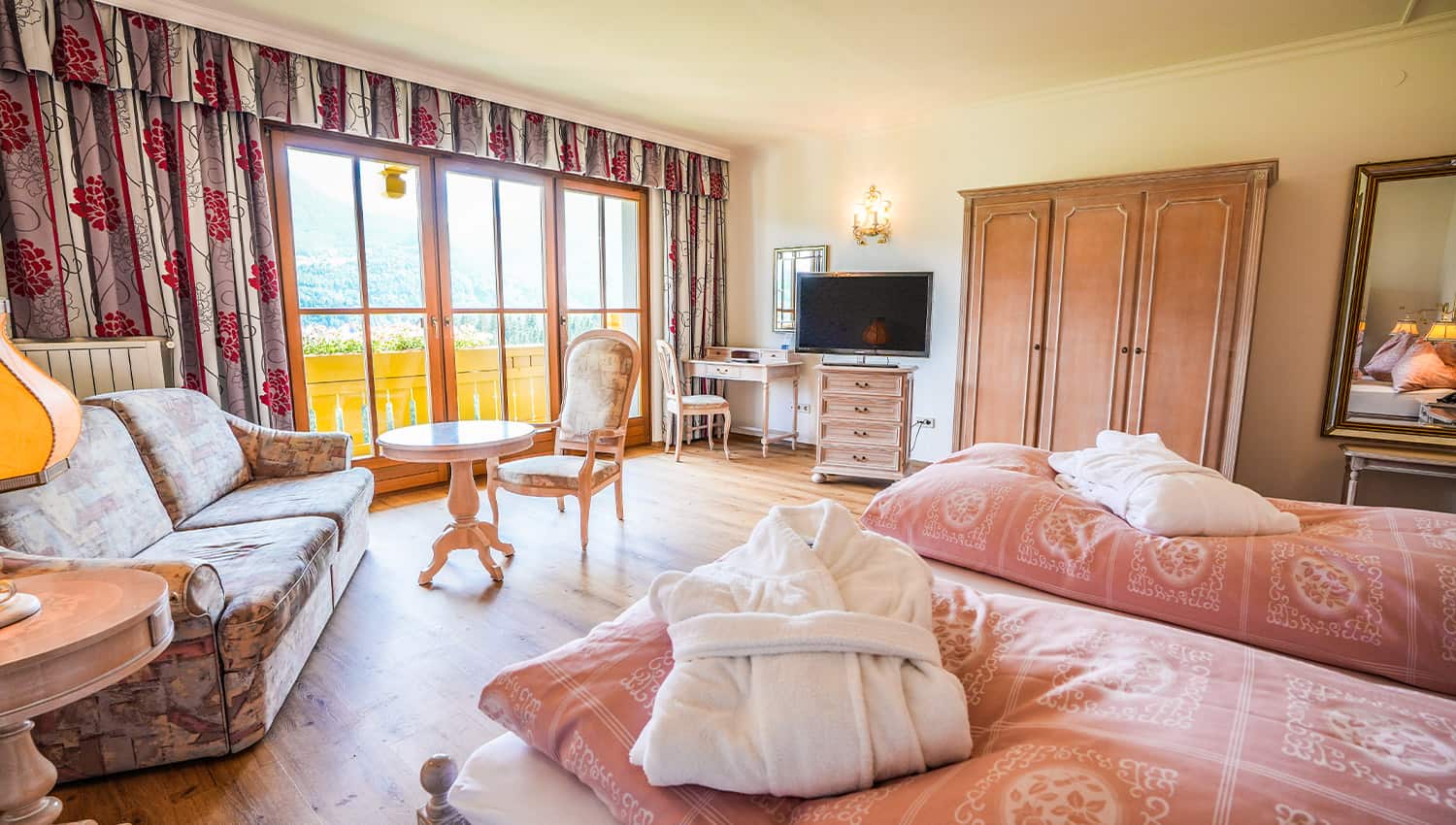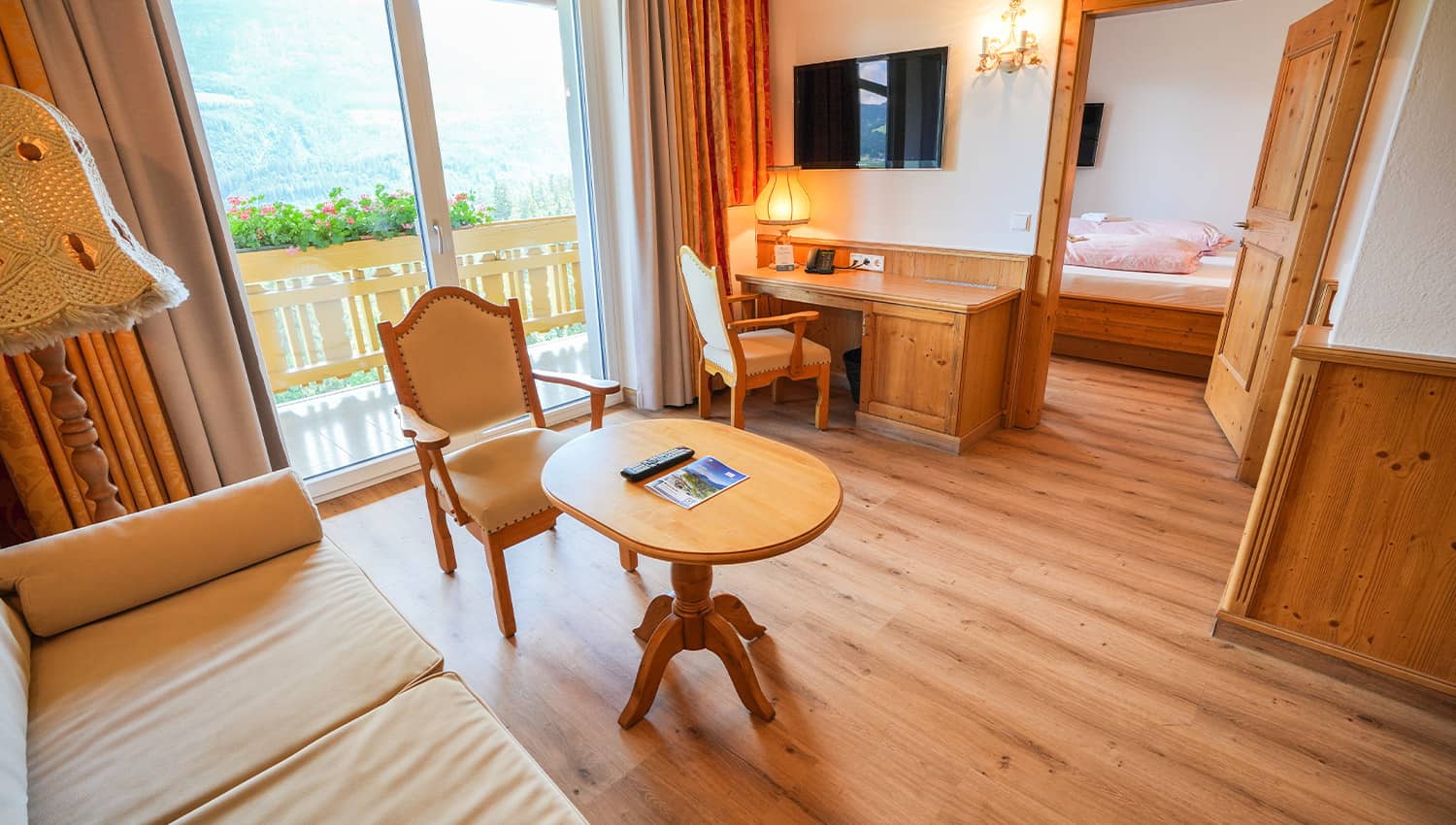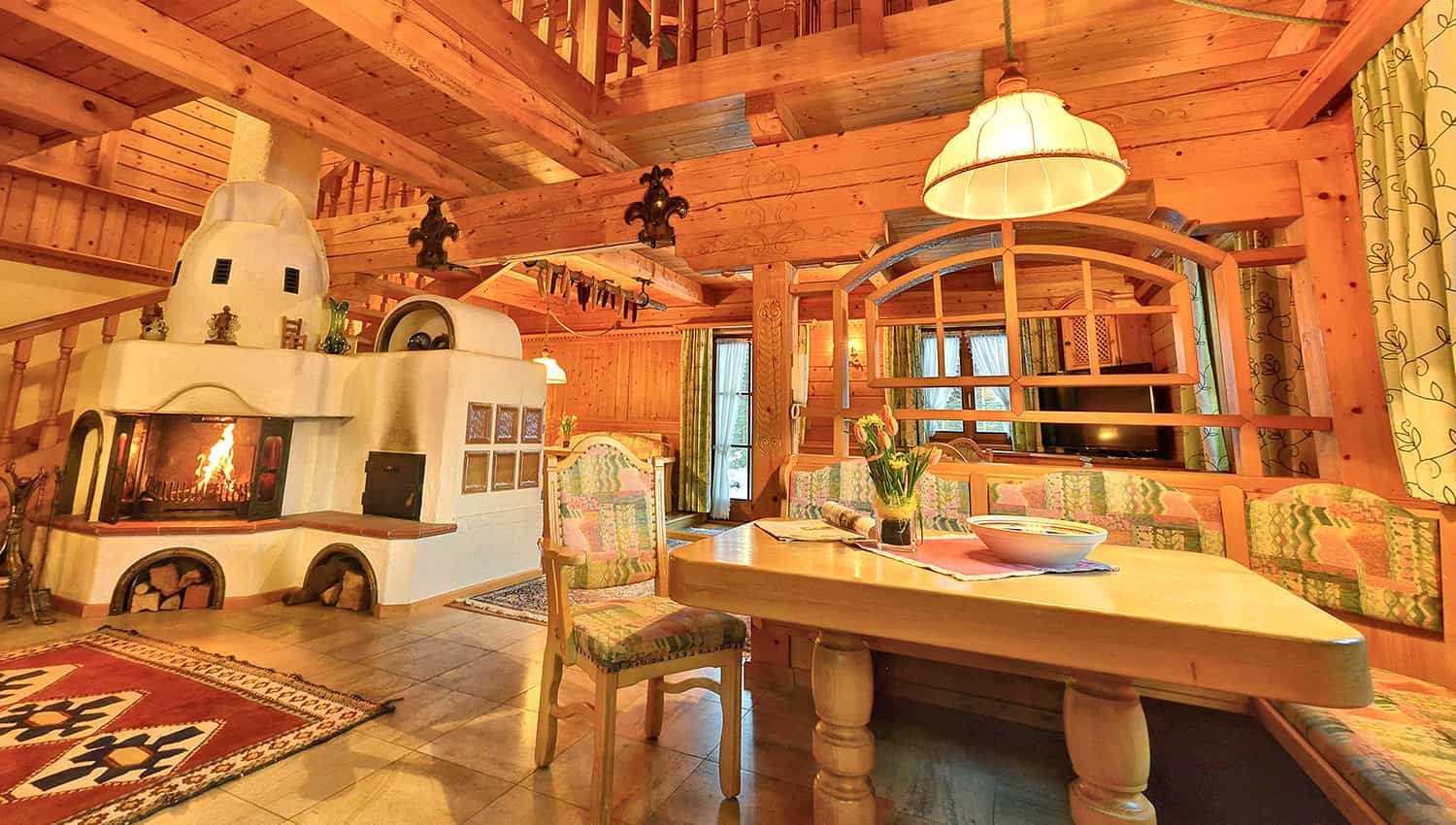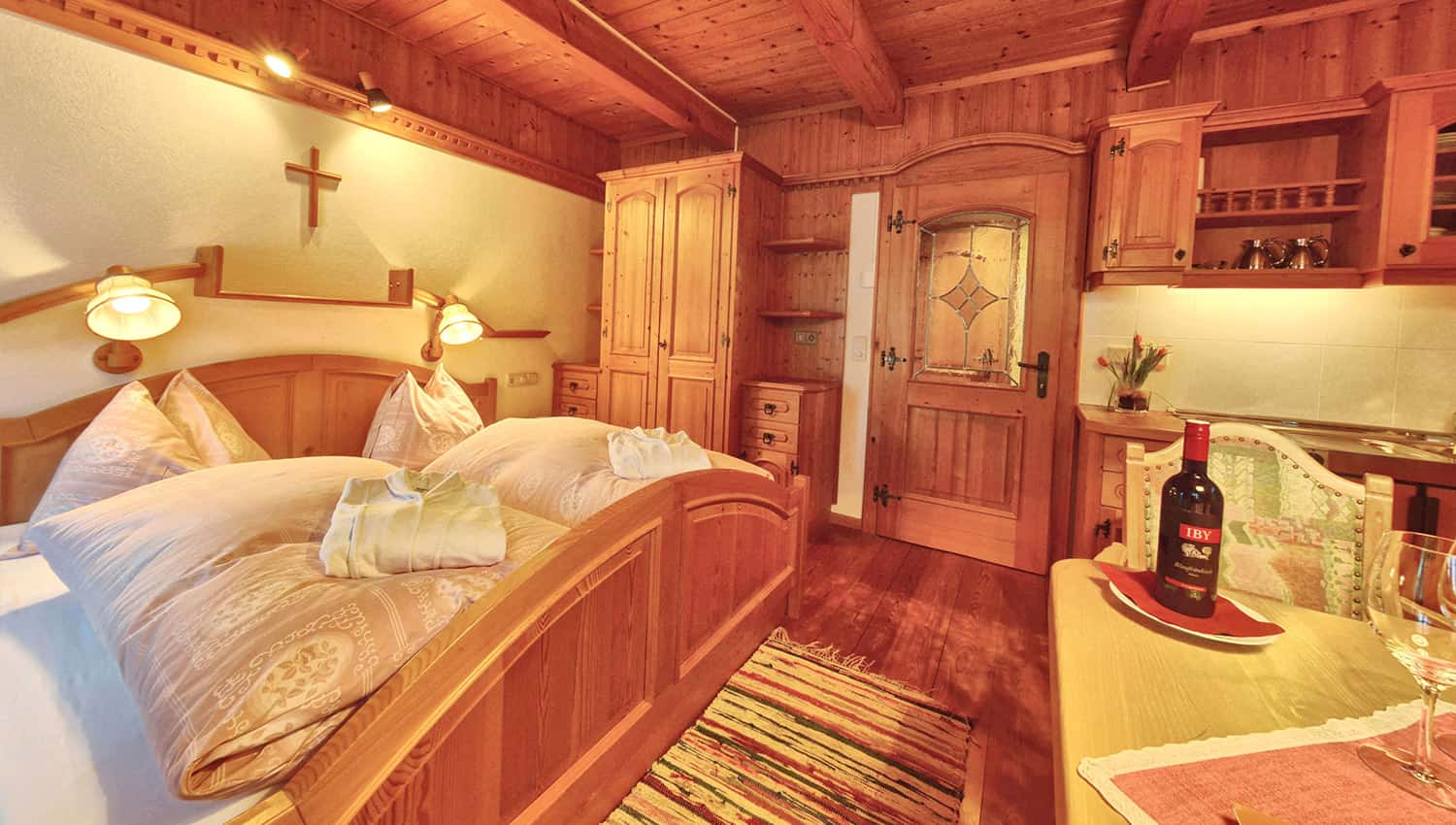
Sensopark Berg im Drautal
Discover your senses.
People, tourism, agriculture and nature. Since time immemorial, the village life has been characterized by it. Sensopark Berg im Drautal wants to build a bridge and bring people closer to nature and natural ways of life again. Mindfulness, appreciation and enjoyment as important cornerstones. On senso-meditative ways one learns to understand nature again. Berg im Drautal was even awarded Slow Food Village as a “place of good living”.
What does Sensopark mean?
A place to learn to grasp nature again – with all your senses. Attentiveness and appreciation towards nature, its products and natural ways of life. Sensopark builds the bridge between nature, tourism and agriculture and promotes relations with each other. The health-conscious person benefits from intact nature, tranquil villages and agricultural products of the local Slow Food Village Berg im Drautal far away from the everyday stress of the big city.
Senso
Senso comes from the Latin “sensum” and means sense, understanding, sensation, feeling as something sensible and meaningful. And “giving meaning” to nature means nothing other than learning to understand and appreciate it again. It refers to the physical as well as the spiritual level. Physical activity, exposure to intact nature and enjoyment of regional food from local producers. Through meditation and exercises, the mind should be able to calm down and collect. Draw strength from nature.
Park
The term park is used geographically and is largely based on a natural park, i.e. a protected but at the same time sensibly and sustainably used and managed landscape area that is to be preserved in its form so that future generations will still find it in the same way. Specifically, the Sensopark refers to the center of the Upper Drau Valley in Carinthia – i.e. the municipality of Berg im Drautal with surrounding neighboring municipalities, the valley landscapes as well as the alpine pastures and peaks in the north and south.
Senso hike
The best thing is to accompany Jutta, our trained hiking and pilgrimage guide, on a Senso hike and experience the Sensopark Berg im Drautal with all your senses.
Program
Depending on the weather, season and size of the group, Jutta adapts the tour and builds nature, landscape, water, fun and games, culture and history into the hike. Also the tasting at a direct marketer in the village must not be missed.
When and where?
The free Senso walks always take place weekly from spring to fall and last about three hours with exercises and breaks. Starting point is the moor Kneipp basin at the Hotel Glocknerhof. You will return in time for lunch. Individual hikes and village tours for groups can be arranged at any time throughout the year.
Registration
Please register by the evening before. You will be amazed at how special Jutta can make a simple walk!
Senso-meditative ways
The first “senso-meditative” paths of Berg im Drautal were created at the beginning of the 1990s, in response to the emerging wellness boom. Taken together, the network of trails is intended to establish a Kneipp Park or “fresh cell trail” and serve to meditatively find and reconnect with nature.
Sensopark – five senso-meditative walks
The paths are best walked alone or in pairs, in order to truly experience them and to internalize them “senso-meditatively” – that is, with mind and feeling. This is the concern of the founders of the Sensopark, a college of mountain experts and herb freaks who want to preserve and maintain what has been passed down to us by our parents’ generation.
Sensopark book
In the booklet “Sensopark” the total of five paths have been described in detail and expanded with meditative exercises for body and soul. The book is available for Euro 7,– at the reception of the Glocknerhof and at the local tourist office and can also be booked directly with an online room reservation.
Three of the paths in Sensopark Berg im Drautal
Paracelsus Way
A senso-meditative morning hike
The Paracelsus Way is a closed circle of twelve stations, for which you have to overcome some meters of altitude and cold baths. Therefore, please bring a bath towel and snack. It is best walked with a mixture of silence on the uphill passages and sharing sensory experiences at the rest stops.
Info about the Paracelsus Way
Paracelsus, actually Theophrast von Hohenheim (1493-1541), received his doctorate in 1515 in Ferrara, Italy, and practiced for many years in Carinthia and Salzburg. In his writing “On Medicine” he emphasized the preventive and healing effects of a natural way of life. Preservation and care of the natural life force were principles of his teaching. The real doctor, he said, only comes from the study of nature. In his treasure trove of therapies, he favored simple, indigenous remedies because he believed that God also made medicinal herbs grow in every land that would be effective against diseases occurring there.
Starting point is the village square in Berg, the bridge at the Berger Wildbach, from where you can overlook the first dams in the north. From here we march towards the Adeg supermarket and then left up through the Dörfl, past the Ährenhof, the Krismayer wayside cross and newly built houses into the Grabenwald.
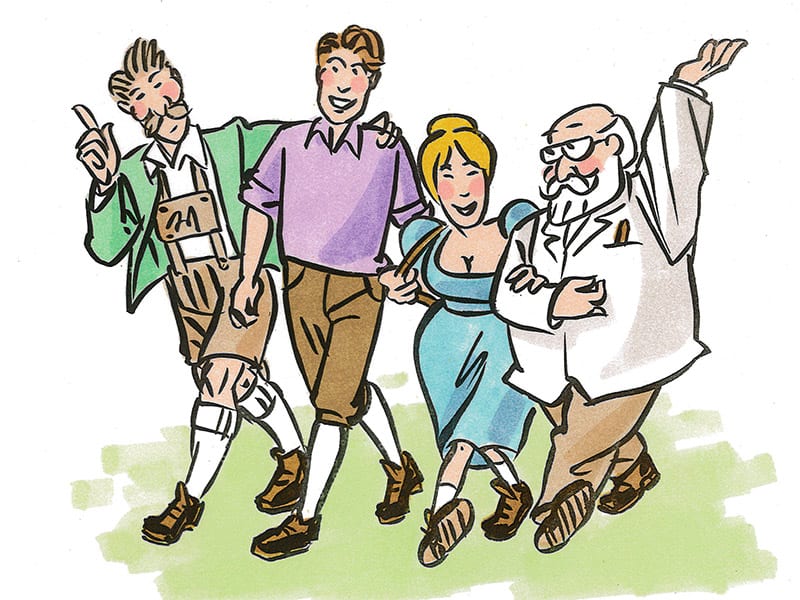
The four wanderers
Station 1 – 4
1st station: Graf’n Säge – breathing exercise
There is not much left to see of the saw in the ditch, but a lonely meadow spreads out in front of it, steaming delightfully in the morning sun. It is ideal for a breathing exercise. Stand in the straddle, throw your arms in the air, stretch your head and take a deep breath. Then stretch the muscles and try to climb the sky. After the stretching exercise, collapse, bend forward, shake out hands, arms and head between straddled legs and blow out the stale air. And that five times in a row, until the blood pulsates in the temples. That’s how we get going. Then walk standing, sometimes with knees to chest, sometimes with heels to buttocks, “waggle” standing, right-left, forward, back and repeat. 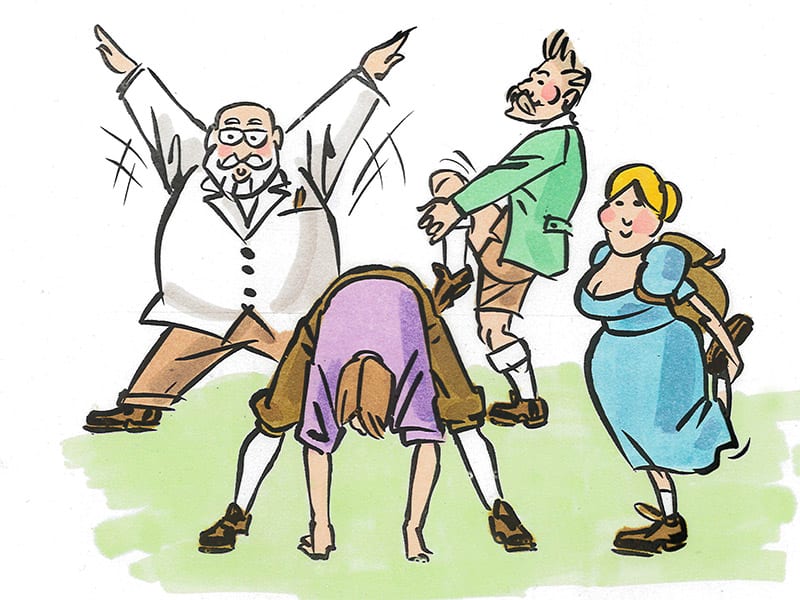
Breathing exercise
2nd station: Wildbachweg – groping mosses
Exercise 2 follows on the torrent path to the waterfall, feeling for cushion moss, ferns and lichens, and that barefoot! This means taking off hiking boots and socks and feeling the mosses on the soft and damp forest floor. Walk for at least ten minutes, hiking boots in hand, from moss to moss, lichen to lichen, feeling the forest floor with the soles of your feet. Muddy mosses on which you sink centimeters deep, sandy soils in between, herbs, fallen trees and spruce needles. What remains are freshly perfused feet, which we then extensively frottieren before we stow them back in the mountain boots. The feeling in the shoe is now different, much more alive.
3rd station: waterfall – full bath with spruce twig
Before arriving at the big waterfall, it is best to collect spruce branches. At the foot of the water weir there is a shallow water bed, at the beginning of the wooden bridge over the stream there is a rest bench. Now put down the hiking robe on the bench and cross the icy cold waters. Then flagellate with the brushwood. Then back into the cold waterfall, for another “lat”. The whole organism quivers, the blood rushes to the head. You will feel like newborn, clear in mind and fresh in body. The method is simple: with the primal scream, shouted out at the top of your lungs, you overcome the shock of the cold. The skin contracts, you lose all sense of temperature. “Slouching” helps the body to relax, promotes blood circulation and stimulates the circulatory system. The whole practiced two or three times in a row brings life energy. Admittedly, the exercise is not recommended for people with heart failure. A foot bath will do the trick.
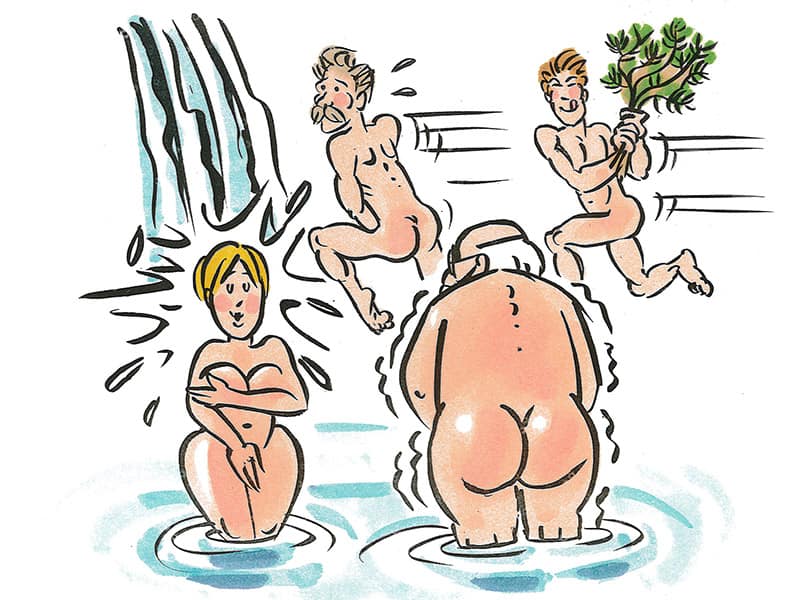
Bathing with spruce brushwood
4th station: forest bench – meditation
The torrent trail continues a few hundred meters further into the deep ditch, but follow the steep and narrow path uphill instead: the Nadelsteig. The “Wadelbeißer” is quickly overcome and then turns into a cattle drive at ground level, at the beginning of which there is a bench. At this resting place we settle down for a short meditation after the strenuous path. We sit down relaxed and prick up our ears to listen to the forest. First the birdcalls, then the light wind brushing the leaves, perhaps the throb of a woodpecker. The dull, soft earth swallows every sound, the longer you look, listen and breathe in the fresh resin smell of the forest, the deeper you dive into your soul and subconscious. Ten to fifteen minutes motionless, completely concentrated, you notice how you slowly withdraw into your innermost being and grow together with your surroundings, pausing in silence.
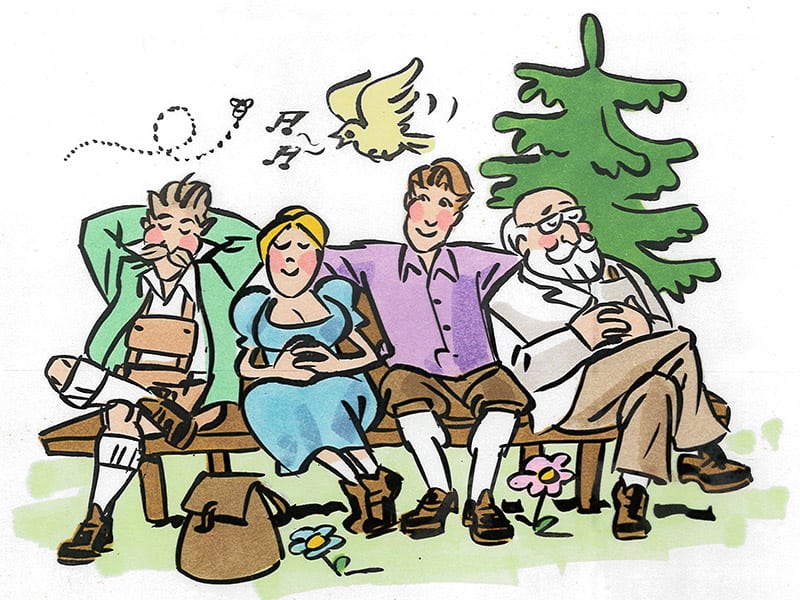
Forest bench meditation on the Paracelsus path
Station 5 – 8
5th station: Hassler meadow – hand bath
After the meditation break, we continue along the coniferous path, passing blueberry fields and bright green forest shrubs. The path, broadly trodden as a cattle drive, compensates for the steep climb from the ditch. Then we step onto an open meadow from which there is a magnificent view of the Spitzkofel and the Jaukengruppe. The dark lonely mood of the forest evaporates and gives way to a warm sunlit openness. We cross a small stream, now just ideal for an arm bath. Just kneel down, dip your forearms into the water, for ten to fifteen seconds, then pause and repeat. After that, you will cross the magnificent herb meadow, the smell of which is quite different from the spicy forest aroma.
6th stop: Langnerhof rest stop
Via the Sonnleit’n we come to the first farm on the Oberberg, the Hasslerbauern and then to the old Bachlerhaus. Between the stable and the house, the eye spies a small treasure from the Breitegger school: a wayside cross with the Holy Trinity, a corpus on the cross, a white dove above and the good God the Father with a world apple in his hand. Just like this house here, almost every farm has its own protective cross, shrine or conduit. From here it is not far to the Jausenstation Langnerhof on the Oberberg, where we can finally activate our sense of taste. With home-made sausages and freshly baked bread, smoked bacon and home-made butter, it’s easy to live. “Everything homemade,” the host enthuses.
7th station: Oberpirker Mühle – breathing exercise
On the way to the Oberpirk mill we cross lush meadows, a small patch of forest and breathe air that is now and then permeated by intense smells caused by freshly cut wood or freshly piled dung heaps. You’ll pass the old Hauserbauer sawmill, a beautiful Greisenegger wayside cross, orchards and ornamental gardens, and a wooden fire tower. Then, before a sharp left turn, we stand in front of the Oberpirker Mühle, the next stop on our way, and repeat the breathing exercise we already practiced at the Graf’n Säge. The water mill itself is one of the few grain mills that are still completely preserved.
8th station: Goppelsberg church – tactile exercise
From the mill downhill we follow the asphalt path along an oak grove of gnarled trees mixed with young deciduous trees and hazel bushes. A special opportunity for our next tactile exercise to take a closer look at and explore the different types of tree bark, the fine paper bark of birches and beeches, the coarse heavy shell of chestnuts and oaks. The old wooden giants almost magically attract the stroller and invite him to linger in their shade. After a rest stop for tired people, we soon arrive in the village of Goppelsberg, which, like Oberberg, has a renovated beautiful little church.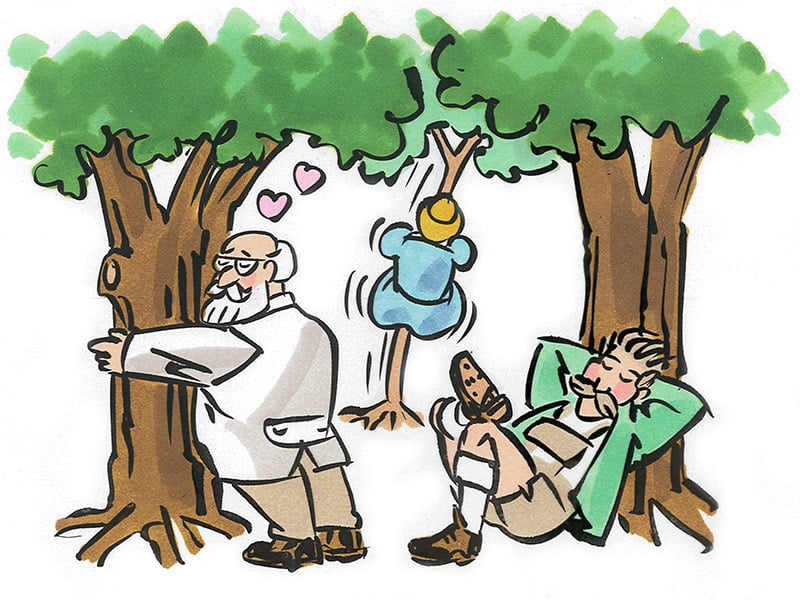
Hikers hug trees
Station 9 – 12
9th station: Brechlerstub’n – amazement
An attraction awaits us a few steps further on. Passing the Orterhof next to the little church we turn into a field path – straight into the “hell”, a steeply sloping hollow path to the Auernighof. Halfway we come across an old Brechlerstub’n, the heart of the formerly widespread linen production on the Goppelsberg. To this communal room, the peasants brought the “tussled” (torn out by the root) tufts of flax, which had previously been dried and bleached in the fields for two to three weeks. In the Brechlerstub’n the flax was roasted on racks over the fire. More than ten farmers helped together to extract fine “Werch” (for shirts and linens) and coarse “Reisten” (for canvases and yokes) from the raw material. The Brechlerstube was in operation until the end of the 1950s, when the cloth market was flooded with cotton fabrics.
10th station: Auernighof – Meditation
At the end of the cattle drive in the hollow way there is a rest bench, ideal for meditation. From here, once again, you look down on the memorable weather lock between Jauken and Reißkofel, the well-known Ochsenschlucht. Close your eyes and review the Senso journey to this point. Tell yourself the most important experiences out loud, rewind them in your mind like a movie. If you have a schnapps of arnica with you, then unwrap, rub arm and leg joints. Later, when you pass by the orchard of the Auernig farm, you will see one of the most beautiful wayside crosses in the village, a life-size corpus of Christ carved by a local mountain farmer.
11th station: nose fountain – arm bath
A few hundred steps below Auernighof, the Senso trail joins Frallacher Weg, from where we walk back towards the center of the village, passing shady ditches and sunny spots, with a magnificent view of the Drauschleife near Berg. In one of the ditches, an unknown artist has set a carved monument resembling a forest rat, letting water through his nose: finally, a good sip of clean water again, plus a refreshing arm bath. We bend our well-warmed bodies over the trough and dip our forearms into the invigoratingly cold water. Two or three times for twenty seconds each, then we shake our arms and the cycle revives anew.
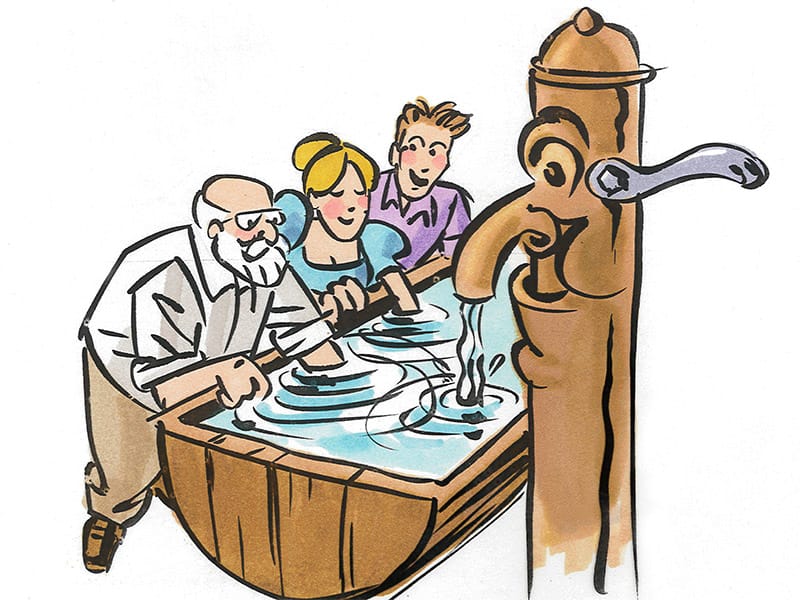
Nose fountain arm bath on the Paracelsus Way
12th station: village square – end
The last stage of the Paracelsus Way is quickly completed. On the way to the town center we pass the parish church of the Nativity of the Virgin Mary from the 12th century and the weathered Karner (ossuary) from Carolingian times two sacral buildings, for which an extra visit program on Sunday after mass is worthwhile. With the little church of St. Athanasius at the bottom of the valley, they are among the oldest buildings in the area. They have survived earthquakes, floods, landslides, Turkish invasions and fires. No less old, but unfortunately no longer in its original state, are the parsonage and the oldest inn in the village, the “smithy”, which hides a wooden ceiling from the 11th century in the northern part of the house.
Johann Hufnagel Way
A senso-meditative afternoon hike
The starting point of the four-hour cultural hike is the Glocknerhof on the eastern edge of Berg im Drautal. We meet here after lunch at the Moorheiltretbad in hiking gear with swimwear in our backpacks. The destination is the Emberg, a beautiful sunny slope on the east side of the Wildbachgraben. The mountain is known for the skiing area Emberger Alm and for its bath Eisendle, a ferruginous spring. Forgotten, on the other hand, is the first organic farm in Carinthia, which caused a sensation in the interwar period.
Info about the Johann Hufnagel Way
In the shadow of the mill, the Hufnagel trail begins a little steeply and is accompanied by old spruce trees to the left and a rivulet to the right. Passing tennis courts and a shady gym in the forest, we follow the hollow path into the hamlet and breathe the intense smell of the young forest. From the Krismayer Way cross we walk for a while on the Paracelsus Way, from which we later part at the fork Oberberg – Emberg.
Right at the border of the Grabenwald lived the mentor of our path, the “Champion of the long-distance hikers”, Johann Hufnagel. In the last 20 years of his life, the Hungarian-born German hiked almost a hundred thousand kilometers from the Atlantic to the Urals and from Norway to Portugal. He was considered a gifted health man, solitary walker and hiking expert. Johann was a true original, who was given a wax figure memorial in a Styrian traveling museum during his lifetime.
Station 1 – 4
1st station: waterfall – foot bath
Immediately after the Hufnagelhaus, the moat forest takes us in its arms, we pass the count’s saw and the Maarmühl cross and take the turnoff to the torrent. The wide forest path crosses the torrent in the deep ditch several times before we finally arrive at the Paracelsus waterfall. Here we want to take a fresh foot bath. We take off our socks and hiking boots and climb over the sharp stones into the cold water. This is a touch and feel and the soles of the feet redden. You gently balance yourself through the stream water and hold your breath until the pain caused by the cold subsides. The footbath is thus also a veritable breathing exercise. It helps against all kinds of rheumatism, gout and nervous disorders, even catarrh, even preventively.
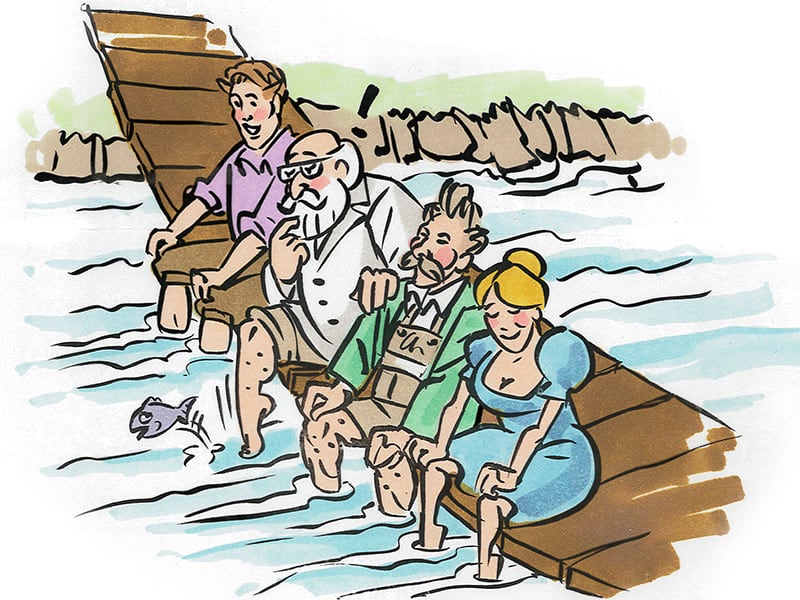
Meditation at the wooden footbridge at the Johann Hufnagel-Weg
2nd station: wooden walkway – meditation
Before we put our hiking boots back on, we walk the few steps to the next station barefoot. This exercise on the gravel path is designed to sharpen the sense of balance and decompress the sensitive soles of the feet. Behind the waterfall, after two interlocking mighty water weirs, we part from the torrent trail at the turnoff towards Emberg. A teetering wooden footbridge leads across the stream to the other bank. Here we settle down and dangle our feet into the flowing water. “The brook caresses the feet,” Johann Hufnagel said of this meditation exercise. Both arms back, back hollow, eyes fixed on the surface of the water and feet in the ice-cold water. Five minutes of silence, just switch off.
3rd station: rest bench – meditation
Shod again, we leave the stream and set off on the steep climb up the Emberg. The steeper the trench drops down to the right, the more we look for firm footing on the slippery and soggy ground, because railings and the like are not available here. The path we are now on is marked B24, we cross a mixed high forest with firs, spruces, beeches and hazels. On the left, steep granite and primary rock blocks rise from the soft humus. From below, a cool wind blows upward from the ditch through the sparse trees. Where the former cattle drive turns into a flat passage, a resting bench awaits the breath-holding hiker: an ideal spot for the next meditative rest break in the forest.
4th station: Zochnig meadow – breathing exercise
In the forest, we repeatedly cross mountain gullies where felled tree trunks are dragged down the ditch. After a few hundred meters we step out into a sunny clearing and leave the ditch. The square on the Zochnig meadow offers a magnificent view down to Greifenburg and to the Weissensee behind it: ideal for a breathing exercise. First we get down on our knees and hop in a circle twice, then we stand up, shake our legs and practice a kind of rope hopping without a rope, rotating the upper body around its own axis, rotating the pelvis around a fixed point, once to the right and then to the left and after each exercise shake out arms and legs vigorously. Then head circles, arm rowing – back and forth. And to the knees. When pulse and breathing have adjusted to the 1000 m above sea level, relax and again back to back slightly bend your knees and loosen muscles. Only the thighs remain tense.
Breathing exercise on the Zochnig meadow at Johann Hufnagel-Weg
Station 5 – 8
5th station: Schönegat – singing exercise
We continue climbing the mountain, after the Zochnighof follows the Marksenhof and a richly carved wayside cross from the Breitegger dynasty. Here we turn left and walk on a shady forest path along the Zametter stream. On the hollow path we go around the Zochnig-Buckel and climb step by step uphill to Schönegat, a resting place on a forest clearing, which is adorned by another interesting weather cross. Here the farmers make marriage vows and ask for rain in dry years. But the rest area is also a delight for a snack, reflection and relaxation – and of course for singing. Those who like to sing should try it here, preferably in several voices. The old Carinthian saying holds true: “A Carinthian and a glass of wine – that’s half a singing club.”
Vocal exercise
6th station: Eisendle bath – arm bath
A few hundred meters further begins the Eisendle estate, which enjoyed great popularity in the past as an “iron bath”. The iron acidulous water was praised especially for its healing effect on diseases of the respiratory, digestive and circulatory organs, joint ailments, gout, anemia, nervous and gynecological disorders, according to an old report about the water. Of course, the Eisendle still offers baths today – but nothing remains of the rustic accessories, wooden troughs and glowing stones. For those who are satisfied with an arm bath, below the farm there is a fountain from which the iron spring gushes. Of course, the water does not taste good. But dipped the arms three, four times, it has an invigorating effect. And afterwards a coffee on the sun terrace and the dry hiking palate is satisfied.
7th station: Schader cross – breathing exercise
From Eisendle, continue east on a slightly ascending, wide forest road (B24). The path is not very difficult and crosses deciduous forests and clearings. An old cable car is also still standing, which was used to transport the manure to the fields above the farms. We cross the Mühlbachl through a narrow ditch and the lookout point at the Amser Bichl until we meet the “Schader Kreuz”. The terrain below the wayside cross is ideal for a breathing exercise: sit on the forest floor and let your head fall into your neck. Bending the legs, supporting the hands backwards, the upper body upright and the head resting on the neck, begin to count. One, two … With each breath, you bend your head forward to clear the airways and then – as you exhale – let your head fall back. And ten times in a row until you get dizzy.
8th station: Eder farmer – treading grass
From Schader Bichl, the highest point of the hike, a field path leads downhill through the so-called “Schwagen”. It is hard to imagine that until a few decades ago there were two farms here. Only some piles of stones and walls remind of it. The path is easygoing and leads across freshly scented mountain meadows. At the Eder, the first property under the Schader Kreuz, we leave the B24 path and cross the courtyard where a domestic well invites us to take a sip of water. Afterwards, on the soft meadow carpet below, the soles of the feet are strained again a little: a natural tasting experience. Let yourself fall, turn your lungs outward and shake off all the weight of the ascent. You’ll notice that your sense of balance is more engaged barefoot and feel how the freshness of the ground transfers to the well-being of your feet.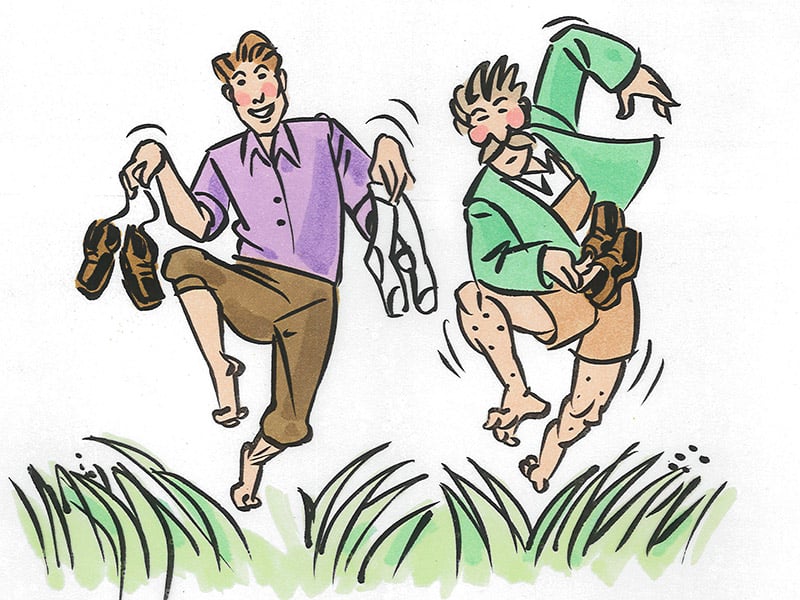
Grass treading at the Eder farmer at Johann Hufnagel-Weg
Station 9 – 12
9th station: Brechlerstub’n – amazement
An attraction awaits us a few steps further on. Passing the Orterhof next to the little church we turn into a field path – straight into the “hell”, a steeply sloping hollow path to the Auernighof. Halfway we come across an old Brechlerstub’n, the heart of the formerly widespread linen production on the Goppelsberg. To this communal room, the peasants brought the “tussled” (torn out by the root) tufts of flax, which had previously been dried and bleached in the fields for two to three weeks. In the Brechlerstub’n the flax was roasted on racks over the fire. More than ten farmers helped together to extract fine “Werch” (for shirts and linens) and coarse “Reisten” (for canvases and yokes) from the raw material. The Brechlerstube was in operation until the end of the 1950s, when the cloth market was flooded with cotton fabrics.
10th station: Auernighof – Meditation
At the end of the cattle drive in the hollow way there is a rest bench, ideal for meditation. From here, once again, you look down on the memorable weather lock between Jauken and Reißkofel, the well-known Ochsenschlucht. Close your eyes and review the Senso journey to this point. Tell yourself the most important experiences out loud, rewind them in your mind like a movie. If you have a schnapps of arnica with you, then unwrap, rub arm and leg joints. Later, when you pass by the orchard of the Auernig farm, you will see one of the most beautiful wayside crosses in the village, a life-size corpus of Christ carved by a local mountain farmer.
11th station: nose fountain – arm bath
A few hundred steps below Auernighof, the Senso trail joins Frallacher Weg, from where we walk back towards the center of the village, passing shady ditches and sunny spots, with a magnificent view of the Drauschleife near Berg. In one of the ditches, an unknown artist has set a carved monument resembling a forest rat, letting water through his nose: finally, a good sip of clean water again, plus a refreshing arm bath. We bend our well-warmed bodies over the trough and dip our forearms into the invigoratingly cold water. Two or three times for twenty seconds each, then we shake our arms and the cycle revives anew.

Nose fountain arm bath on the Paracelsus Way
12th station: village square – end
The last stage of the Paracelsus Way is quickly completed. On the way to the town center we pass the parish church of the Nativity of the Virgin Mary from the 12th century and the weathered Karner (ossuary) from Carolingian times two sacral buildings, for which an extra visit program on Sunday after mass is worthwhile. With the little church of St. Athanasius at the bottom of the valley, they are among the oldest buildings in the area. They have survived earthquakes, floods, landslides, Turkish invasions and fires. No less old, but unfortunately no longer in its original state, are the parsonage and the oldest inn in the village, the “smithy”, which hides a wooden ceiling from the 11th century in the northern part of the house.
17-Kräuterweg (17 herbs path)
A senso-meditative morning hike
With the 17-Kräuterweg, Berg im Drautal has set a monument to its hotel pioneer Adolf Seywald Sr. who died in 2004. Adolfo Sr. had the idea in the mid-50s to build the first “tourist boarding house” with hot and cold running water, later the first outdoor swimming pool, the first hotel with indoor swimming pool, the old mill and much more. The basis for this were agricultural products such as bacon, sausages, fruit and house brandy, which he sold far beyond the borders of the valley, as far as Kitzbühel and Badgastein.
Info about the 17-Kräuter-Weg
Adolfo Sr. was a passionate farmer, gardener and rose grower. In winter, when it was snowing outside and dark early, he experimented in the in-house distillery with fruit schnapps, which he added 17 herbs to in the second distillation process. Thus was born the famous 17-Kräuter schnapps, which became popular far beyond the borders. “Every day a Stamperl and one becomes 100 years old”, he affirmed in company and during tours through the house, even if the high age itself was not granted to him.
The 17-Kräuterweg is an easy three-hour hike with ten stops and runs from the Hotel Glocknerhof along the Panorama Trail to Greifenburg and from there along the Gnoppnitzbach stream and via the Drauschleife on the valley floor and St. Athanasius via the Saurasten and the Berger Wildbach stream back to the village center. It can be walked in any weather and also offers a lot of fun in a group.
Station 1 – 3
1st station: Klock am Mühlbach – breathing exercise
The starting point of today’s Sensowege is the Moortretbad at the Glocknerhof. We follow the panoramic path in the direction of Greifenburg, past the two Zametter farms with their old orchards, until we come to the Mühlbach. Behind it spreads a beautiful meadow, a real power place of nature. The so-called Klock consists of an old harp and a small hill where the legendary Liebesbankl is located. Here we get new energy with a breathing exercise – and best of all barefoot. Take off your walking shoes, stand with your legs shoulder-width apart on the floor, knees slightly bent. Then focus on a point with your eyes or keep them completely closed.
The breathing exercise:
First, let your arms hang at your sides. Thumb and index finger touch and form a circle.
- Now slowly move your arms up from the bottom sideways so that they touch above your head – like a jumping jack movement or a wing beat. During this movement, inhale deeply and slowly through the nose into the abdomen and hold the breath (with arms above) for five seconds.
- After that, the movement is reversed, so arms again slowly move down. You breathe out completely (also through the nose) during this process. You also hold your breath here for five seconds.
- Repeat this exercise three times. At the end of the third repetition, after holding the exhaled state for five seconds, dangle the arms forward across to the floor. Finally, shake out and relax and continue breathing calmly.
- Then repeat the entire exercise sequence described previously from point one to four, but exclusively with the left arm. Then the entire exercise sequence from point one to four, using only the right arm.
2nd station: Erni Nass bench – herbal exercise
After the breathing exercise, we return the few meters to the mill stream and then climb uphill to the left next to the course of the stream (panoramic path). Further up, we cross the stream again and continue on the wonderfully fragrant forest path, passing uprooted tree trunks and clearings and enjoying the view over the valley. The path goes uphill and downhill, collect along the way any little herbs and fragrant plants that seem familiar, so that the next exercise will work. Because soon we come across a small resting bench, where Erni Nass also drew strength. At well over 90 years old, she was the oldest hiking guide in the Drau Valley, not a bit quiet and gifted as a herb witch. Sit down and spread the collected herbs in front of you, smell them one by one and put them down again. Then assign the smells in your mind and make sure the assignment is correct in a second pass. Concentrate and repeat the exercise a few times, you will see how the mind opens.
3rd station: Alpine view – grass treading
After this break of concentration we continue our way, we cross a small brook and come to the Amberg above Hauzendorf, pass an old homestead, the Bachmann, a herb witch house and a beautiful wayside cross as well as an old water basin. After that, the path continues on asphalt, downhill and uphill again on gravel. Then we cross the courtyard of the old Alpenblick guesthouse to end up in a beautiful flower-strewn meadow with a water pond. Here we take off our walking shoes to feel the fresh grass for the next few hundred meters. China has its own spring festival (Qingming or Taqing Festival) dedicated to treading grass. In Bavaria, grass treading has been a tradition since the 19th century and comes from the Kneipp school. Grass treading is simply about stroking the hyper-sensitive soles of your feet and feeling the pleasant sensation of fresh earth and moist soil.
Station 4 – 7
4th station: Amberg windmill – mental exercise
The rest of the way is comfortable and easy to walk. At a historical memorial dedicated to the Battle of Greifenburg in 1252, we reach the asphalt road to the Emberger Alm. Just opposite the display board is a beautiful wayside cross and above it a funny windmill, erected on the occasion of a school project. So what is the reason for the display board? In the valley below, 800 years ago, the imperial armies of the Gorizians and Tyroleans fought a bloody battle with the papal troops of the Spaniards for the inheritance of the Babenbergs, at the end of which the influence of the Archbishop of Salzburg was consolidated with possessions in Carinthia. The nearby and highly visible Greifenburg Castle played an important role as a bone of contention at that time. The question now is, was the medieval carnage actually worth it?
5th stop: Greifenburg toll house – tour
We now walk downhill and pass the Gartnerhof and then the cemetery of Gries with a small church from the Spanheimer period, dedicated to St. Francis of Assisi. St. Vitus is dedicated. Whoever is interested: The western porch pillars of the church show two beautiful walled-in Roman-period inscription stones, one of which transmits the fragmentary funerary inscription of the local family of the Antestii and of Gaius Antestius Ambudsuilus, mayor of Theurnia. From the Mauerschmied house we then follow the Gnoppnitzbach downhill until we reach the main road, where the old toll house stands. The inconspicuous little house, which is a listed building, was of great importance in earlier centuries, as customs duties and tolls were collected here from passing merchants.
6th station: Hauzendorfer Waldl – tactile exercise
After a brief visit to the toll booth, we have two options for continuing our 17-Kräuter Weg. The more charming spruce needle path (G17) leads directly south along the Gnoppnitzbach stream, the plainer G16 starts a little further west as an asphalt path and leads through the same forest as a passable gravel path. On the G17 downstream there are several possibilities to cross the Gnoppnitzbach (Mautbach) and later to stroll through a beautiful spruce forest before we step out onto the flat land and feel wonderfully soft cattle pastures under our feet. Take advantage of the diverse tree vegetation in the Hauzendorfer Waldl to rediscover your often neglected sense of touch. Linger where you are also visually drawn, feel and smell the resin and bark. Here you can not get lost at all.
7th station: Berger Moos – cloud riding
However you walk through the small wood, at the end you will meet again the gravelled and later unpaved dirt road G16, which turns west just before the mighty Drau River and then runs along the railroad tracks and along the “Lauen”, a quiet “animal” populated waterbed. In some places there are “Passage prohibited” signs, but they are not to be heeded, as this is an officially signposted path and there is no danger. Only where it goes over the railroad embankment (but which we do not have to cross), watch out. Soon we come to a larger rivulet, the spur of the Zametter Mühlbachl, where the Berger Moos, a hugely beautiful cattle pasture, begins. Here we lie back on the ground for a rest and count the clouds in the firmament for ten minutes.
Station 8 – 10
8th station: St. Athanasius – Meditation
A few hundred meters further on we come across St. Athanasius, a former pilgrimage church in the open field. The church, first mentioned in 1443, was originally consecrated to St. Nonosius by the Bishop of Caorle in 1485 and has been enlarged several times. The unusual appearance of the popular little church is due to the high late Gothic choir with a pointed gable helmet, which adjoins a low Romanesque nave with an even lower open porch. It’s best to settle down in the shaded porch for a meditation practice. Here you can read the history of the church on a time table and then let go of your thoughts.
Try a “journey inward”: sit up straight and relaxed, with your spine straight. Then lower your weight vertically through your body down to the floor. Let go of all your plans, worries and fears, let the wind carry you like a feather. Travel without baggage into the innermost part of your being, to where the power resides that some people call God. Slowly feel the warmth flooding from the inside out and taking possession of the whole body.
9th station: Brunner mill – arm bath
Above the church we cross the main road to walk on the circular path marked B26 through the Saurasten. If you are already tired, you can turn right at the Pleschgatter and walk directly back to the Glocknerhof. The fitter hikers turn left to march towards the village center. We pass some beautiful newly built houses and then walk uphill a few steps to come across a small water mill after a small bridge over the Berger Wildbach, the last remaining of many grain mills on this stream. Here, give yourself a quick arm bath before heading home. Just kneel down, dip your forearms into the water, for ten to fifteen seconds, then pause and repeat. Then take your bath towel from your backpack, wet it with the fresh wet and use it to cool your forehead. A small resting bench below the mill gives you time to linger a bit.
10th station: Glocknerhof Moorbad – water treading
On the last stage of the 17-Kräuter Weg you hike up the Berger Wildbach to the village square and follow the Kirchweg in the direction of the Glocknerhof, past the department store, the Ährenhof and the Kriesmayer Wegkreuz through the “Jenseits” and then over the Hohlweg. At the end we end up at the Glocknerhof and use the healing moor bath to tread water. Kneipp is a treatment method to stimulate circulation and arterial blood flow. The cold stimulus causes the blood vessels to contract. Together with muscle movement, this promotes venous blood flow and prevents varicose veins. By the way, treading water in the evening helps to fall asleep better.
Application: Step barefoot into knee-deep cold water and step on the spot. Then stride through the water like a flamingo. One leg should always be pulled completely out of the water, and the tip of the foot should be bent down slightly (stork walk). After 30 seconds, you feel a strong cold sensation in your feet and lower legs. Then briefly leave the cold water to warm up the feet again. Repeat this procedure several times. After treading water, simply wipe off the water (do not dry off) and do a little exercise to warm up.


